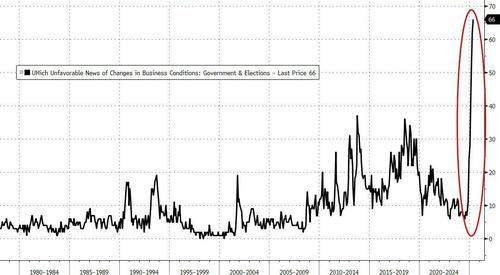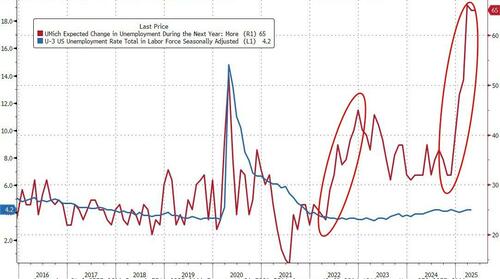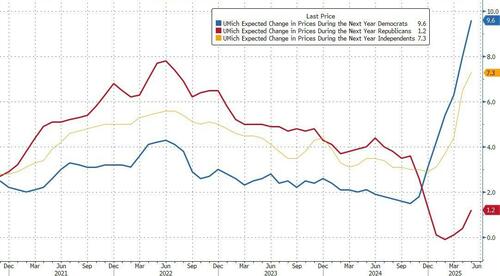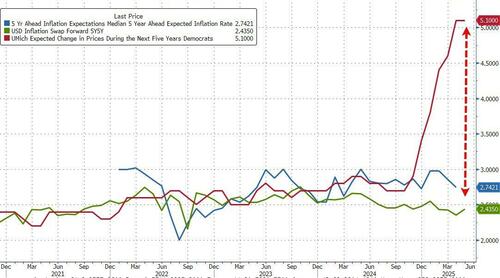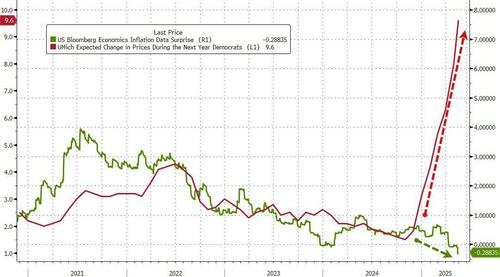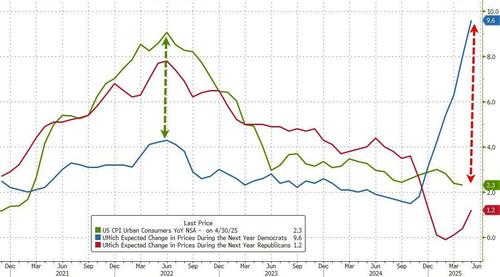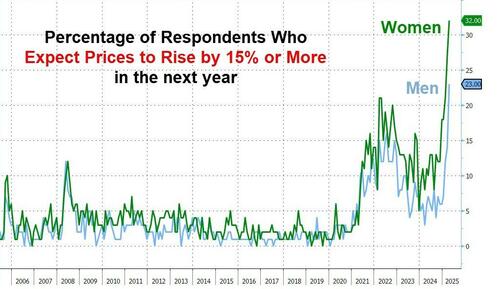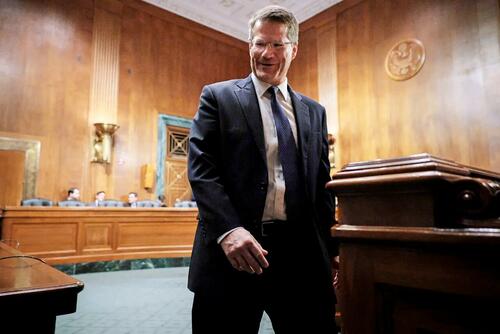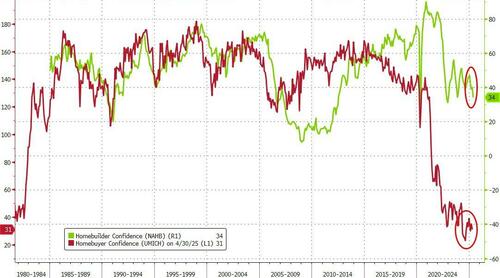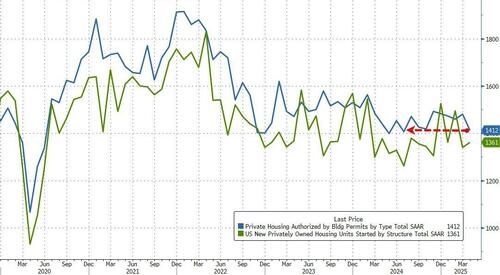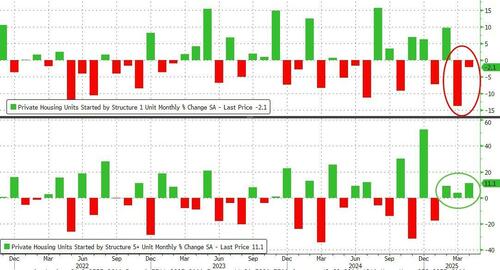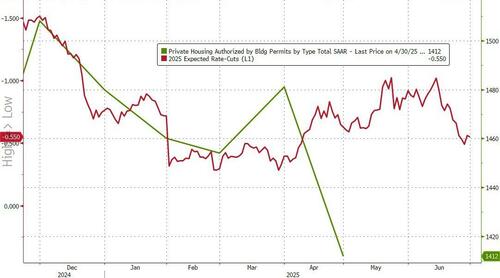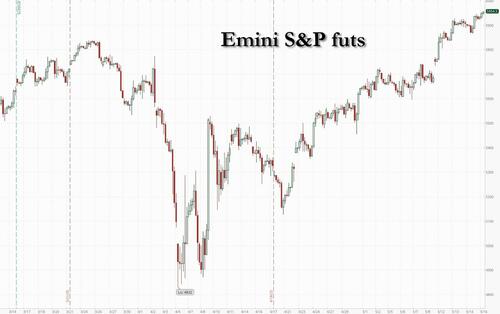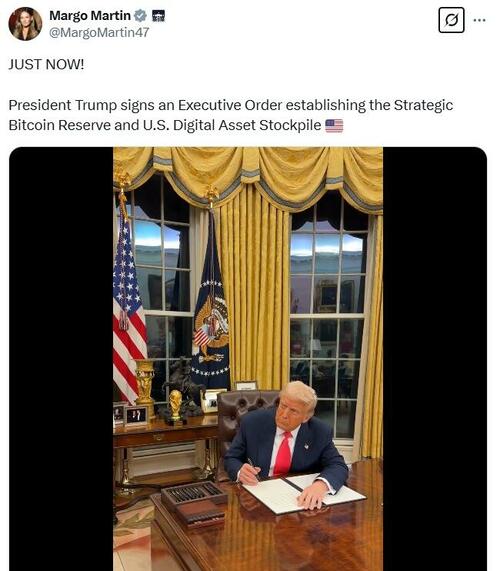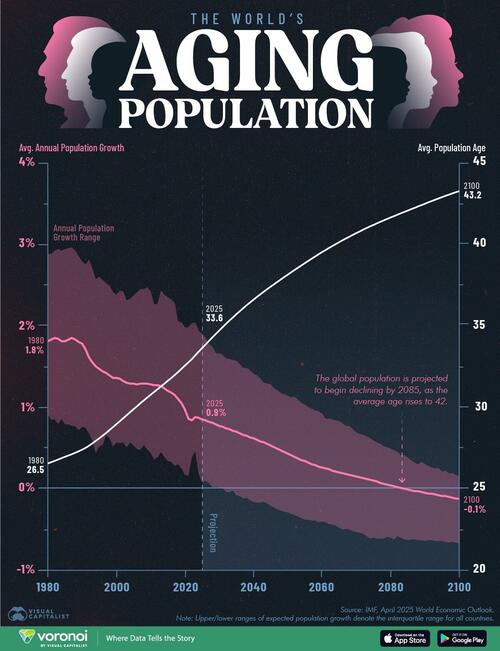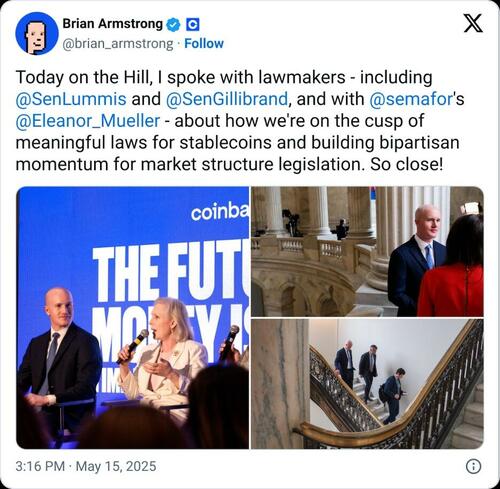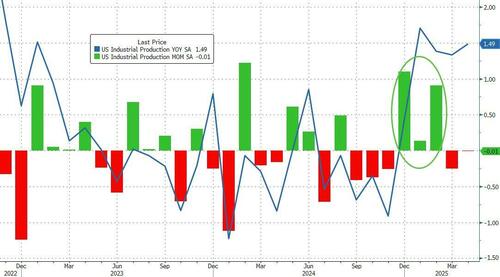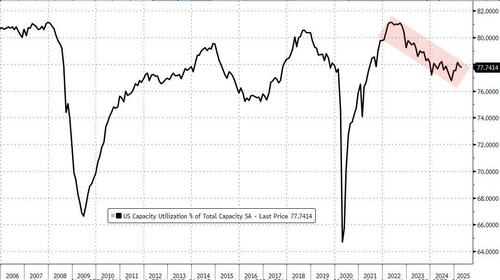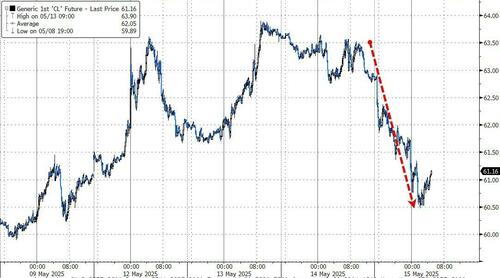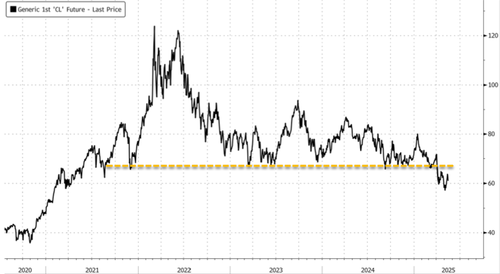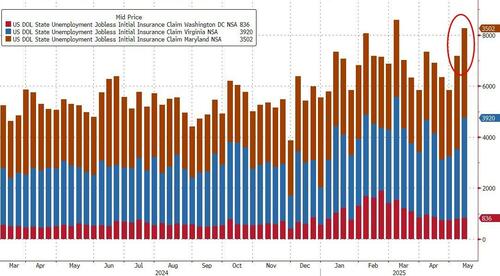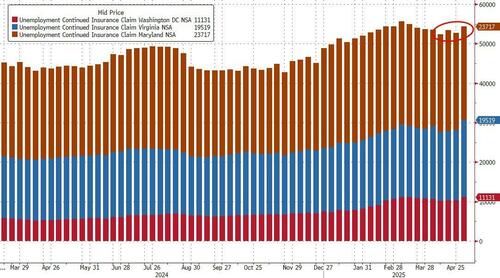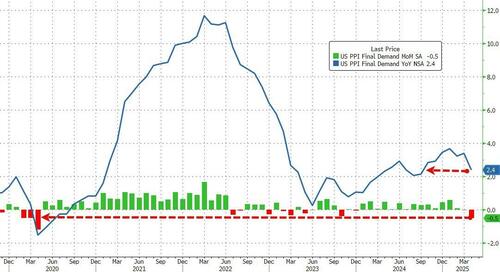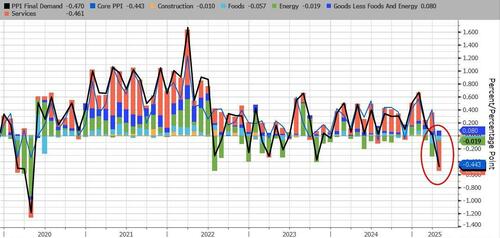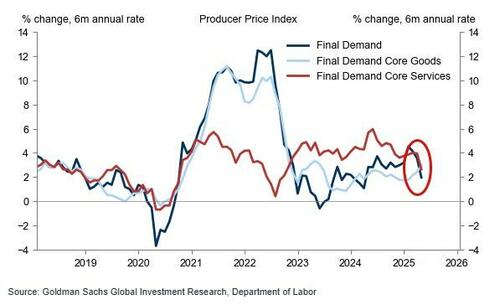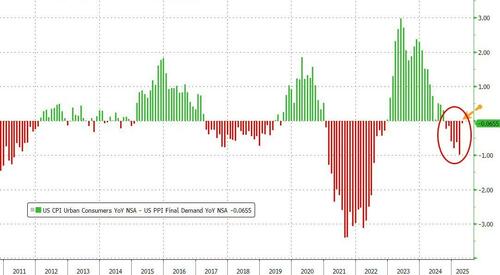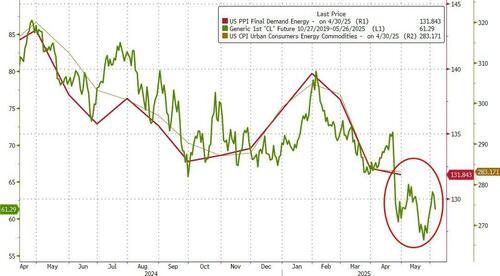“What is perfection in love? Love your enemies in such a way that you would desire to make them your brothers … For so did He love, Who hanging on the Cross, said ‘Father, forgive them, for they know not what they do.’” (Luke 23:34)
Distinction Matter - Subscribed Feeds
-
Site: Catholic ConclaveCardinal Bishop of Algiers, modernists to the rescue?During the days before the Conclave, in the normal and predictable whirlwind of voices and interviews that these occasions arouse, we had missed the interview given to the daily newspaper of the CEI "Avvenire", on April 29, 2025 (here), by His Eminence Cardinal Jean Paul Vesco, O.P., Cardinal Archbishop of AlgiersThe interview, as you will Catholic Conclavehttp://www.blogger.com/profile/06227218883606585321noreply@blogger.com0
-
Site: Catholic ConclaveAs one of three Papal electors from Germany, Cardinal Reinhard Marx participated in the conclave. In an interview, he now reflected on his first meeting with Cardinal Prevost and commented on the Vatican's financial situation.From the perspective of Munich Cardinal Reinhard Marx, there was only "very isolated" criticism of Pope Francis in the pre-conclave. Trying to pretend nothing is going Catholic Conclavehttp://www.blogger.com/profile/06227218883606585321noreply@blogger.com0
-
Site: LifeNews
Craig Paton reported for the Independent on May 13, 2025 on the Not Dead Yet UK rally outside Holyrood (Scottish parliament) as the Liam McArthur assisted suicide bill was debated and voted on.
The rally opposing assisted suicide featured actress Liz Carr and Scottish Labour MSP Pam Duncan-Glancy.
Paton reported that Silent Witness star Liz Carr told campaigners outside the Scottish Parliament that:
“I am so fed up of having to answer strangers’ questions, even in this day and age, who think that being us must be the worst thing imaginable,” she said to campaigners, which included a number of disabled people.
Click here to sign up for pro-life news alerts from LifeNews.com
“That having pain, having difficulty with everyday activities, must mean that it would be better if we were dead – that is not the case.”
Paton reported that Liz Carr qualifies for assisted suicide under the bill.
“But it also has a definition that I would qualify under, I would define myself as a disabled person, but actually the definition of having a progressive condition, I would come under that.
“So the potential for this to include far more than just those with true terminal illnesses … those as well with degenerative conditions, is what concerns so many of us and so many of the people that are here today.”
Scottish Labour MSP Pam Duncan-Glancy, who strongly opposes assisted suicide, also spoke at the rally. Paton reported:
Addressing the dozens of campaigners outside Holyrood, Ms Duncan-Glancy said: “If any of my colleagues are in any doubt whatsoever, if in doubt: don’t.”
She added: “The risk is too high.
“And so I hope that my colleagues will listen carefully to that and will not support this legislation this afternoon.
“I know that I will, on behalf of all of you, go in there and fight for out lives.”
The bill passed at second reading by a vote of 70 to 56. The bill will now go to committee and a final vote is expected later this year.
LifeNews.com Note: Alex Schadenberg is the executive director of the Euthanasia Prevention Coalition and you can read his blog here.
The post Disabled People are Not “Better off Dead” appeared first on LifeNews.com.
-
Site: Fr. Z's BlogOn this Feast of St. John Nepomuceno the sun came into view at 5:47. We will lose sight of it again at 20:27. Our ears will not hear the un-run Ave Maria Bell at 20:45 in the Roman Curia, but … Read More →
-
Site: Catholic ConclaveIn the final year of his Pontificate, Pope Francis repeatedly pointed out the Vatican's dramatic deficit. While Cardinal Marx sees a clear need for action, he warns against panic-mongering – and explains what he believes is behind the headlineMunich Cardinal Reinhard Marx rejects reports of deep red figures in the Vatican. "I can't confirm that. The situation isn't as catastrophic as some claim,"Catholic Conclavehttp://www.blogger.com/profile/06227218883606585321noreply@blogger.com0
-
Site: RT - News
James Comey knew exactly what his recent cryptic social media post meant, the US president has claimed
US President Donald Trump has accused former FBI director James Comey of posting a since-deleted social media post calling for his “assassination.”
Comey posted a photograph of seashells spelling out the numbers ‘86 47’ in a now-deleted Instagram post on Thursday. He captioned the cryptic post with “cool shell formation on my beach walk.”
White House officials and Republicans quickly interpreted the post as a coded threat to the 47th US president, arguing that the number 86 is intended as slang for ‘get rid of’ or ‘kill’.
Comey subsequently deleted the image and explained in a separate post: “I posted a picture earlier of some shells I saw on a beach walk, which I assumed were a political message. I didn’t realize some folks associate those numbers with violence. It never occurred to me but I oppose violence of any kind so I took the post down.”
Trump isn’t convinced.
“He knew exactly what that meant. A child knows what that meant,” he told Fox News in an interview on Friday.
That meant assassination. And it says it loud and clear.
“If you’re the FBI director… and you don't know what that meant? Now, he wasn’t very competent, but he was competent enough to know what that meant,” the president added.
Donald Trump Jr. also saw Comey’s Instagram post as a call to murder his father.
Just James Comey causally calling for my dad to be murdered.
— Donald Trump Jr. (@DonaldJTrumpJr) May 15, 2025
This is who the Dem-Media worships. Demented!!!! pic.twitter.com/4LUK6crHATDirector of National Intelligence Tulsi Gabbard said Comey could face legal consequences for the incident.
Read more Ex-FBI director Comey under investigation for ‘call to assassinate Trump’
Ex-FBI director Comey under investigation for ‘call to assassinate Trump’
“The rule of law says people like him who issue direct threats against the president of the United States, essentially issuing a call to assassinate him, must be held accountable under the law,” she said in an interview with Fox News on Friday.
Comey and Trump have been at odds for years. The US president fired him as the FBI director in 2017, during his first term in the White House. Trump later accused him of spreading “false statements and lies” and of being a “dirty cop.”
During his 2024 reelection campaign, Trump survived an assassination attempt when a gunman took shots at him during a rally in Butler, Pennsylvania. The would-be assassin grazed Trump’s ear with a bullet, killed a spectator in the crowd behind him, and injured several others. In addition, at least one other plot to kill Trump was foiled in the lead-up to last year’s election.
-
Site: LifeNews
Despite the U.S. Supreme Court overturning Roe v. Wade and Planned Parenthood v. Casey on June 24, 2022, Planned Parenthood aborted more unborn children during the 2023-2024 fiscal year than the previous year and brought in a $100 million increase in taxpayer funding.
In the recently released 2023-2024 fiscal year annual report titled, “A Force for Hope,” Planned Parenthood performed 402,230 abortions during that time. That is an increase of nearly 10,000 abortions over the previous year (392,715).
The report also showed Planned Parenthood received about $792.2 million in “Government Health Services Reimbursements & Grants” versus $699.3 million from the previous year. U.S. taxpayers are
Click here to sign up for pro-life news alerts from LifeNews.com
Planned Parenthood’s largest financial contributor by supplying 39 percent of the organization’s $2 billion in revenue.
The nation’s largest abortion business, which commits over 1,100 abortions per day, presents killing unborn children and harming women as “inspiring hope.” The annual report begins, “Every time a patient walks through the doors of a Planned Parenthood health center, it is an act of hope — hope that they’ll get the care they need, that their decisions about their own bodies will be honored, that they’ll be truly seen. Every time a young person searches online for health information, their hope is that someone, somewhere has unbiased, real answers. Every time someone takes a birth control pill, or gets their IUD taken out, or goes with their partner for STI testing, they are filled with hope that the future they plan is possible.”
Twelve states now have banned elective abortions, and six states passed restrictions at or before 12 weeks of pregnancy. However, Planned Parenthood reports how it “helped” more than 100,000 women seeking abortions in the past year, particularly those who traveled from pro-life states elsewhere. More than 12,500 women received on average $275 to go toward travel costs. That’s more than $3.4 million in direct funding for abortion travel.
Chemical abortions now account for at least 63 percent of all U.S. abortions, an increase from 53 percent in 2020. Contributing to that is a new telehealth platform that Planned Parenthood provides in 42 states and Washington, D.C., for many services, including abortion pills to women who do not have to see a doctor in person to be screened for complications.
The annual report also highlights the first birth control pill available in the U.S. without a prescription as well as updated education videos available to anyone on YouTube regarding chemical abortions.
Even though it is the largest abortion provider in America, Planned Parenthood’s annual report claims that abortion is only four percent of the organization’s “medical services” for the last fiscal year. However, Planned Parenthood arrives at this false statistic by dividing the number of children it aborted (402,230) for the year by the number of “services” the group provided (9.4 million). This means when a woman visits a Planned Parenthood facility to obtain an abortion, she is also given a pregnancy test, an STI test, a cancer screening and contraception. Therefore, the abortion procedure would be considered 20 percent of the “services” she received. Using this deceptive formula, the report manipulates the data to make it appear as if abortion is a tiny percent of its “services,” though a much higher percentage of actual patients who visit Planned Parenthood facilities are there, first and foremost, to obtain an abortion.
Liberty Counsel Founder and Chairman Mat Staver said, “Planned Parenthood’s annual report reveals once again that its primary mission is making huge profit under the guise of ‘providing hope’ to women by killing their unborn babies. Abortion is not health care. It is human genocide for profit. We must continue to fight to protect these helpless children.”

The post Planned Parenthood is Killing 1,100 Babies Every Day. Defund It Now appeared first on LifeNews.com.
-
Site: LifeNews
Adriana Smith was 9 weeks pregnant when she sought medical treatment for severe headaches. Medical providers gave her medication but didn’t realize Smith had multiple blood clots in her brain until it was too late. Smith was declared brain dead about 3 months ago. A Georgia hospital has been keeping her on life support since, and her son is now about 21 weeks. Doctors are hoping to get him to 32 weeks.
These situations are rare, but not entirely unprecedented. One systematic review found that, in 35 cases of maternal brain death, 77% of neonates were born alive and 85% of those born alive had normal outcomes by 20 months after birth. However, in this study the mothers experienced brain death on average closer to 20 weeks gestation and were on life support for an average of about 7 weeks. Smith was only 9 weeks pregnant when she was declared brain dead, and she’s already been on life support for over 12 weeks. It’s certainly possible her son could be born alive and healthy, but the odds aren’t clear.
Smith’s family said doctors told them they can’t take Smith off life support due to Georgia’s abortion law. Media coverage doesn’t quote any doctors, attorneys, or any experts involved in either Smith’s case or Georgia law generally.
Click here to sign up for pro-life news alerts from LifeNews.com
Georgia law defines abortion as “the act of using, prescribing, or administering any instrument, substance, device, or other means with the purpose to terminate a pregnancy…” Removing life support would not involve “administering” anything. It’s not clear Georgia’s abortion law is actually the issue here.
It’s more likely that Georgia’s law regarding withdrawing life support for pregnant patients is the issue. GA Code § 31-32-9 states that doctors can’t withdraw life support from pregnant patients unless both (1) the fetus isn’t viable and (2) the patient had an advanced directive explicitly stating she wanted withdrawal of life-sustaining measures.
Note this code isn’t a result of Dobbs. It was enacted 15 years prior, in 2007. Most states have similar measures, including pro-choice states such as Alaska, Colorado, Illinois, Nevada, New Hampshire, and Pennsylvania.
So far I haven’t seen media coverage — or abortion advocates — make any mention of what Smith herself would have wanted in this situation. (I find it’s pretty common for abortion advocates to not seriously consider that some women would not want our unborn children to die, even if it costs us.) If abortion advocacy were primarily about autonomy, you’d think Smith’s likely perspective would be worth at least considering.
I also haven’t so far seen any mention of the perspective of Smith’s boyfriend, her son’s father.
There is discussion of the perspective of Smith’s mother, April Newkirk, who is upset that doctors said it’s not ultimately up to Smith’s family whether to take her off life support. Still even Newkirk says that, had it been the family’s choice, they “might not have chosen to end the pregnancy.”
It’s a testament to how very little abortion advocates value unborn children, that even in a case where the woman (1) cannot be harmed by continuing the pregnancy and (2) may very well have wanted her child to live, the framing is outrage that her son’s life is prioritized.
LifeNews.com Note: Monica Snyder is the executive director of Secular Pro-Life, an organization that uses non-religious arguments to promote the pro-life perspective. Snyder worked as an investigator with the human rights organization, Live Action, to investigate the Washington-Surgi Abortion Clinic to expose their late-term abortion practices. This appears in the November issue of National Right to Life News.

The post Doctors Fight to Save Life of “Brain Dead” Mom’s Unborn Baby appeared first on LifeNews.com.
-
Site: Zero HedgeTrump's Trade War Lit A Fire Under YETI CoolersTyler Durden Fri, 05/16/2025 - 15:00
Our previous supply chain analysis revealed a list of major US brands that remained heavily exposed to China. The ongoing trade war has lit a fire under U.S. management teams, accelerating efforts to shift production—either through friend-shoring or reshoring—as it appears likely that some level of tariffs on Chinese goods will remain through the second half of the year.
The latest U.S. company highlighting its China exposure is drinkware brand YETI, which disclosed at an investor conference this week that shifting production out of China has become a top priority.
Goldman analysts Brooke Roach, Evan Dorschner, and others wrote in a note on Thursday about the top takeaways from their visit to YETI's headquarters in Austin, Texas, for an investor meeting.
Roach said their conversations with management revolved around :
-
U.S. growth;
-
Drinkware;
-
Product innovation and portfolio extension;
-
Supply chain transformation and tariffs;
-
International expansion
On US growth, the drinkware business, and the innovation pipeline, the analyst summarized their conversations with management:
-
U.S. growth opportunity: YETI continues to see immense growth opportunity in its core U.S. market. Within this, management expects growth to be driven by three components: (1) Stoking brand heat; (2) Continuing to build out the product portfolio; and (3) Expanding the depth of their channels. On product, management's tone was especially positive on the bags category as a driver, but they also highlighted continued extensions of their core hard cooler and drinkware portfolios through new form factors, use cases, sizes, and other diversification.
-
Drinkware: While drinkware remains an area of pressure for the business overall given headwinds in specific SKUs, the company continues to see growth opportunity for the category as a result of innovation and new form factors. Management sounded particularly constructive on improving upon core products (such as stackable products vs. original items in the same family), as well as ceramic coated drinkware items and the upcoming sports jug launch. The food and cooking categories are also an area of opportunity, with management noting that several recent launches (food storage and bowls) were top requested items from ambassadors and customers. The company also pointed out its historical ability to weather other drinkware cycles in the past. Looking ahead, the company remains focused on driving relevancy in the core through innovation, though SKU productivity remains a key priority as well.
-
Approach to innovation: The company is accelerating its innovation pipeline, with plans to launch 30 products this year and sustain the faster pace of innovation recently reached, while simultaneously building brand stories around new product launches. YETI discussed its approach to innovation, noting they have dedicated senior leaders who focus on each of their core growth opportunities: (1) softgoods; (2) C&E, and (3) food and beverage. The company highlighted that its current product portfolio provides opportunities for significant expansion in the shoulder areas of where they currently play, with products having connections to the core brand. Importantly, all products must have durability, performance, and design as core principles, as well as offer relevance to the consumer in multiple aspects of their life. YETI is thus focused on broader use cases outside of core outdoor categories (i.e. bags and backpacks rather than just the subcategory of hydration bags). Management noted several new innovations are on the horizon, including a broader rollout of their small soft coolers / lunchbag category and additional SKUs in the backpack category.
Here's where analysts and YETI management discussed tariffs, sourcing, and international strategy.
The key takeaway: tariff pressures have accelerated YETI's supply chain shift out of China, with production increasingly moving to Thailand, Malaysia, and other Southeast Asian countries equipped with full-scale manufacturing capabilities.
-
Tariff commentary: YETI highlighted tariff disruption did drive the company to rework its product development process, driving a faster innovation cycle and speed to market. The company noted that the tariff impact will depend on timing of purchases and capitalization of inventory on the balance sheet (with constraints focused on new launches with production in China), but that it can recapture a lot of the pressures as they continue to diversify and optimize their supply chain.
-
Sourcing: Shifting production out of China remains a key priority for YETI. The company clarified that its top partners have been building manufacturing facilities in Thailand and Malaysia which are now ramping. Beyond this, tertiary partners are also shifting production outside of China but are in earlier stages of the transition, with factories set to open in SE Asia. Net, the company expects to have four key partners and five factory facilities outside of China in their first wave of diversification which leverages existing suppliers. Importantly, management noted these facilities have full manufacturing capabilities (not just finishing and testing), are efficient (strong labor force / robotics capabilities), and have competitive costing to China sourcing (following initial start-up inefficiencies).
-
International: Management reiterated the Australian and Canadian markets continue to perform well overall, and struck a constructive tone regarding the company's potential in the UK. Germany is also a high-potential market but is in earlier stages of scaling compared to the UK. YETI also highlighted the whitespace it has in Asia which is largely an untapped market for the company.
Roach has a "Neutral" rating on YETI shares with a 12-month price target of $28.
On Tuesday, Aaron Jagdfeld, CEO of Generac Holdings, appeared on Bloomberg Television to discuss the company's long-term strategy to reduce reliance on Chinese supply chains. He outlined that Generac has been reducing its supply chain exposure to China since President Trump's first term and will reduce its 10% exposure to 5% in 18 months.
Seattle, Washington-based Wyze Labs, a popular seller on Amazon of smart home and wireless camera products, revealed on X earlier this month that their "first tariff bill" has "accelerated" efforts to leave China in two months, with serious consideration of restoring supply chains in the United States.
Trump's tariff shock is working. It has always been about pressuring corporate America to detach from cheap China supply chains and either friend-shore or re-shore.
. . .
Just a reminder...
In Hot Water: YETI Bars Conservative Group from Customizing Cups https://t.co/1EGUoSSiY1
— zerohedge (@zerohedge) March 28, 2025 -
-
Site: PeakProsperityChris discusses vaccine narrative collapse, institutional distrust, economic crisis signals, and legal actions against pharmaceutical marketing practices.
-
Site: southern orders
Pope Leo XIII beautiful pectoral cross on Pope Leo XIV’s official photo:
And bombshell interview with Archbishop Cordilione who would make a great Cardinal Prefect for the Dicastery of Divine Worship!
‘Out of the banality’ - Cordileone on liturgical reform
-
Site: Zero HedgeNew College Grads Not Working Out, Most Hiring Managers Say: SurveyTyler Durden Fri, 05/16/2025 - 14:40
Authored by Mary Prenon via The Epoch Times,
Inappropriate attire, excessive use of cell phones, poor quality of work, and foul language are just a few of the reasons 65 percent of U.S. hiring managers gave for firing college graduates who had recently started their first job.
A Pollfish survey of 1,000 managers across America, reported by Resume.com, revealed the reasons that eight in 10 managers said newly hired college graduates did not work out during their first year on the job.
Excessive use of cell phones ranked as the top pet peeve of managers, at 78 percent. Some 61 percent of managers found their new hires were entitled or easily offended, while 57 percent noted these new employees were unprepared for the workplace. Lack of a work ethic scored 54 percent, followed by poor communication skills at 48 percent and lack of technical skills at 27 percent.
Other concerns managers had about the graduates included lateness, failure to turn in assignments on time, unprofessional behavior, and inappropriate dress and language. Seventy percent of companies surveyed noted that some hires had to be placed on performance improvement plans.
“Colleges don’t teach students how to behave in the workplace, and there is a lack of transitional support from both universities and employers,” Resume.org’s career coach Irina Pichura stated in the report.
“Most students graduate with little exposure to professional environments, so when they arrive at their first job, they’re often learning basic workplace norms for the first time. Colleges should have a workplace training program to support graduates’ transition to the workplace.”
Clark Lowe, CEO of O'Connor Company, a leading national commercial construction firm, agrees.
“Colleges do a disservice to students in not preparing them for work,” he told The Epoch Times. “Parenting has also been pushed off to the schools, and building of character has been pushed off to the workplace. That’s very frustrating!”
Lowe served as an adjunct professor for Mercy University in Dobbs Ferry, New York, for many years, teaching graduate business courses.
“A lot of professors have no work experience beyond teaching,” he said.
“They grow up in academia and stay there, but all of those degrees and certificates are not going to replace work experience.”
Based in Pinehurst, North Carolina, the O’Connor Company is a remote company with about 60 employees, including skilled construction workers, project managers, and staff in accounting, marketing, and administration. It develops nonresidential structures such as public and educational buildings.
Last year, the company hired 30 new employees and plans to add 10 more this year.
“The latest generation seems to be getting more and more entitled,” Lowe said.
He and his team have also had some problems with recent college graduates, especially those who had never held any type of job.
“In our experience, those people tend to be difficult to work with since the work ethic is not there and they have never learned what it’s like to earn their own paycheck,” he said.
Previous Work Experience Is a Must
Lowe looks for individuals who show initiative and drive and are excited about coming to work. Previous work experience is a must for his firm.
“We don’t care what type of work they did, whether it was in a gas station or retail store,” he said. “What’s important is that jobs teach them responsibility, time management, and a work ethic.”
Only 58 percent of companies responding to the Pollfish survey indicated they plan to hire from the class of 2025, and one in six hiring managers admit they’re hesitant to hire recent graduates at all. Of those managers who are open to hiring new Generation Z graduates, more than 50 percent are seeking qualities such as initiative, a positive attitude, a strong work ethic, adaptability, and openness to feedback.
Pichura also shared advice for recent graduates on how to demonstrate initiative during and after the hiring process.
“During the interview, candidates should come prepared with research and ideas,” she said.
She recommends using real examples, such as stories where the individual stepped up without being asked to solve a problem. She refers to the “Situation, Task, Action, Result” method as the “STAR” method.
Once hired, Pichura noted, a new employee should look for ways to take ownership of tasks, ask for feedback, and go beyond their role.
“Even in an entry-level role, new hires can stand out by looking for small ways to own tasks, solve problems, and offer solutions before being asked,” she said.
“Being reliable, meeting deadlines, and treating every task with care and intention builds trust and credibility early on.”
-
Site: Zero HedgeUMich Survey Suggests Women, Democrats, & Low-Income Americans Are Out Of Their TDS-Addled MindsTyler Durden Fri, 05/16/2025 - 14:30
Having embarrassed themselves with their TDS-driven cognitive dissonance over the past few months, Democrat-voting UMich respondents (and women, and low income Americans) in the preliminary May survey (a month after Liberation Day and also post-Pause and the massive meltup in stocks) turned the TDS-terror dial to '11'.
Consumer Expectations are now at their lowest since - drum roll please... May 1980...
Source: Bloomberg
Tariffs were spontaneously mentioned by nearly three-quarters of consumers, up from almost 60% in April; uncertainty over trade policy continues to dominate consumers’ thinking about the economy.
Note that interviews for this release were conducted between April 22 and May 13, closing two days after the announcement of a pause on some tariffs on imports from China.
The percentage of UMich respondents making unsolicited negative comments about news they've heard on government economic policy has surged to a record high of 66%!
Source: Bloomberg
The share of consumers expecting unemployment to rise in the year ahead increased for the sixth consecutive month and is now more than double the November 2024 reading and the highest since 2009.
Source: Bloomberg
Year-ahead inflation expectations surged from 6.7% last month to 7.3% this month, the highest reading since 1981 and marking five consecutive months of unusually large increases of 0.5 percentage points or more.
Source: Bloomberg
This month’s rise was seen across all three political affiliations. Long-run inflation expectations climbed from 4.4% in April to 4.6% in May, reflecting a particularly large jump among Democrats to a ridiculous 9.6% over the next year!!
Source: Bloomberg
Republicans did forecast a rise in their view of 5Y inflation expectations (while Democrats were flat at 5.1%)...
Source: Bloomberg
Spot the odd one out - UMich Democrats, The NY Fed, or The Market...
Source: Bloomberg
One more for fun - comparing Democrats view of the inflationary outlook to the 'hard' inflationary data...
Source: Bloomberg
Finally, given their historic track record (completely refusing to acknowledge the surge in inflation under Biden), should we simply be ignoring the manic Democrats screaming about inflation now?
Source: Bloomberg
The Republicans seemed to get it? But then again, they're all racist ignoramuses with no PhDs... so there's that, right!?
Sorry, one more that made us fucking laugh... one-third of women surveyed believe inflation over the next year will be 15% or higher...
Low-Income Americans are also terrified like never before...
So someone is lying: actual spending all time high while reported sentiment (based on 250 polled UMich respondents) is all time low.
Is the soft-data slump all driven by leftists imbibing mainstream media's desperate propaganda-fueled terror of what Trump is doing?
Perhaps that explains why soft survey data has started to turn back up to hard data reality in the last week as it's hard to hate and keep pushing out your depression-era forecasts when stocks are at record highs and jobless claims remain near record lows.
-
Site: AsiaNews.itIn his first address to the diplomatic corps accredited to the Holy See, the pontiff outlined the pillars of the Church's missionary action. In the Clementine Hall, he stressed the link between religious freedom and peace. 'Give new life to multilateral diplomacy,' he said. He reiterated his opposition to weapons: 'halt the production of instruments of destruction and death'. He cited today's challenges, like migration, the environment, and artificial intelligence. ...
-
Site: Zero HedgeNightmare New Jersey Transit Strike Cripples Rail ServiceTyler Durden Fri, 05/16/2025 - 14:20
New Jersey was hit by its first statewide transit strike in over 40 years early Friday morning, as 450 unionized locomotive engineers walked off the job amid a contract dispute about pay. The strike brought NJ Transit's rail network to a halt and disrupted service for 350,000 commuters.
The Brotherhood of Locomotive Engineers and Trainmen (BLET) announced the strike late Thursday night on X, sharing a post that included a link detailing the breakdown in contract negotiations between its negotiators and NJ Transit negotiators over terms of the new contract for locomotive engineers.
BLET locomotive engineers on strike at NJ Transit. Read more here: https://t.co/DdRhKTf8bh pic.twitter.com/4SR1PqUDIO
— Brotherhood of Locomotive Engineers and Trainmen (@BLET) May 16, 2025"After 15-hours of non-stop contract talks today, no agreement on a wage increase was reached this evening between BLET and NJ Transit managers," the union wrote in a press release, adding, "NJ Transit managers walked out of the talks shortly before 10 p.m. and through their actions have forced a strike despite the transit agency having the funds for a raise."
Rail Teamsters from the @BLET are on strike at New Jersey Transit and picketing major terminals in Newark, New York Penn Station, and Atlantic City.
— Teamsters (@Teamsters) May 16, 2025
If NJT can spend half-a-billion dollars on lavish penthouse offices, they can come back to the table with a fair deal for their… pic.twitter.com/HXvPC4BHcCBLET members have been in talks with NJ Transit since 2019 about a new labor contract, but have failed to reach a deal every time.
"In August 2023, the members of the local union voted unanimously to grant the BLET National President the authority to call a strike when it became lawful to do so and if a deal had not been reached," the union said.
BLET National President Mark Wallace blasted NJ Transit:
"NJ Transit has a half-billion dollars for a swanky new headquarters and $53 million for decorating the interior of that unnecessary building. They gave away $20 million in revenue during a fare holiday last year. They have money for penthouse views and pet projects, just not for their front-line workers. Enough is enough. We will stay out until our members receive the fair pay that they deserve."
Wallace was quoted by the local media outlet NBC 4 New York as saying that engineers are committed to the strike until a fair deal is reached.
NBC 4 New York provided a breakdown of key points of the contract dispute:
-
The Brotherhood of Locomotive Engineers and Trainmen went on strike at 12:01 a.m. Friday, leaving some 350K NJ Transit riders impacted
-
The nation's third-largest transit system, NJ Transit, provides nearly 1 million weekday trips, including into New York City. More NJ Transit buses are being added, but supplemental service can only accommodate about 20% of the people who could be accommodated if the trains were running
-
The MTA and other transit agencies are also adding service to help mitigate impacts
-
Wages have been the main sticking point. The union claims its members earn an average of $113,000 a year and says an agreement could be reached if that went to $170,000. NJ Transit leadership disputes the union's data, saying engineers have average total earnings of $135,000 annually
-
The last time there was a transit strike was in 1983. That one lasted about a month
A BLET spokesman said the union "is ready to bargain" and "returns to the table now." Talks are now scheduled for Sunday and will include federal mediators.
Earlier, NJ Gov. Phil Murphy apologized to commuters whose daily commutes to work were abruptly disrupted and called the labor action a "slap in the face of every commuter."
New Jersey Governor Phil Murphy said, “the contract being negotiated at this moment is about the long-term future of NJ Transit,” but the state will not “cave” in order to end the first railroad strike in more than 40 years for the agency https://t.co/RoqnQYu4jk pic.twitter.com/gp0a7hp0hk
— Bloomberg TV (@BloombergTV) May 16, 2025The New York Times noted: "The abrupt suspension of all of New Jersey Transit's train service on Friday will make it harder for Gov. Philip D. Murphy to claim that he rescued the troubled transit agency."
-
-
Site: Rorate Caelifor Rorate CæliMay 16, 2025Within hours after the election of Pope Leo XIV, Cardinal Burke sent the new Pope a heartfelt message of congratulations: Please join me in thanking Our Lord for the election of Pope Leo XIV, Successor of Saint Peter, as the Shepherd of the Church throughout the world. The Shrine of Our Lady of Guadalupe at La Crosse has a New Catholichttp://www.blogger.com/profile/04118576661605931910noreply@blogger.com
-
Site: LifeNews
This week I joined 112 other pro-life leaders in signing a crucially important letter to HHS Secretary Robert F. Kennedy Jr. and Martin A. Makary, M.D., Commissioner of the FDA.
Here’s what we told them.
The most comprehensive analysis of chemical abortion pills shows nearly 11% of women who take this toxic medicine suffered serious adverse complications.
Click Like if you are pro-life to like the LifeNews Facebook page!
(function(d, s, id) { var js, fjs = d.getElementsByTagName(s)[0]; if (d.getElementById(id)) return; js = d.createElement(s); js.id = id; js.src = "//connect.facebook.net/en_US/sdk.js#xfbml=1&version=v2.10"; fjs.parentNode.insertBefore(js, fjs); }(document, 'script', 'facebook-jssdk'));
In addition, one in 20 women require a second abortion attempt. Why? Because a common complication with chemical abortion is an incomplete abortion—that is, parts of the baby and/or placenta are left behind in the womb.
This opens the door to sepsis or other life-threatening infections.
Women are needlessly being placed directly in harm’s way, and we know why.
In cooperation with the Obama and Biden administrations the FDA eliminated crucial medical safeguards for women having chemical abortions. Original researchers were adamant that the protections now jettisoned were absolutely critical in protecting women.
Our letter pointed out that the FDA’s purpose is to safeguard the health and safety of Americans. Furthermore, it helps “the public get the accurate, science-based information they need…to maintain and improve their health.” Yet a growing body of evidence indicates these pills are unacceptably dangerous to women.
We encouraged HHS Secretary Kennedy and FDA Commissioner Makary to place the safety of women over the extreme politics of the abortion industry.
They are in an excellent position to thoroughly and impartially examine the dangers chemical abortion poses to women and act quickly to remedy any threats to their health or lives.
You can help educate others to the documented dangers of chemical abortion pills as well as the science behind abortion pill reversal. Simply sharing this information with the people around you may literally save a life.
LifeNews.com Note: Bradley Mattes is the President of Life Issues Institute, a national pro-life educational group.

The post Abortion Pills Leave Parts of Baby Inside Mother 5% of the Time appeared first on LifeNews.com.
-
Site: LifeNews
The nation’s leading abortion business “failed in attempting to rewrite the science of human development,” as a state Supreme Court ruled that the term “fetal heartbeat” legally protects unborn children from abortion at six weeks.
The South Carolina Supreme Court unanimously upheld the 2023 Fetal Heartbeat and Protection from Abortion Act, which safeguards babies from surgical or chemical termination the moment medical technology can detect “cardiac activity, or the steady and repetitive rhythmic contraction of the fetal heart.” After losing a previous case to declare the law unconstitutional, Planned Parenthood focused its third round of jurisprudence against the act on trying to redefine the onset of a “fetal heartbeat” from six weeks to at least nine weeks, affording the abortion giant to commit three more weeks of unrestrained abortion. But justices ruled that Planned Parenthood did not believe some of its own arguments, which relied heavily on semantics.
The state Supreme Court ruled unanimously on Wednesday that, while medical professionals may “disagree on [the] precise meaning” of nearly every medical term in the law, its use of the term “fetal heartbeat” constitutes a “biologically identifiable moment in time … when electrical impulses are detectable on an ultrasound — which even Planned Parenthood acknowledges occurs at approximately six weeks of pregnancy.”
Click Like if you are pro-life to like the LifeNews Facebook page!
(function(d, s, id) { var js, fjs = d.getElementsByTagName(s)[0]; if (d.getElementById(id)) return; js = d.createElement(s); js.id = id; js.src = "//connect.facebook.net/en_US/sdk.js#xfbml=1&version=v2.10"; fjs.parentNode.insertBefore(js, fjs); }(document, 'script', 'facebook-jssdk'));
“Time and time again, we have defended the right to life in South Carolina, and time and time again, we have prevailed,” said South Carolina Governor Henry McMaster (R). “Today’s ruling is another clear and decisive victory that will ensure the lives of countless unborn children remain protected and that South Carolina continues to lead the charge in defending the sanctity of life.”
The ruling comes as a triumph for pro-life state lawmakers, who saw Democrats storm out of the legislative proceedings over the original 2021 heartbeat bill, after House Minority Leader Todd Rutherford (D-74) declared, “[The] Democratic caucus is not going to participate in this farce of a vote about pretend life.”
“We commend the South Carolina legislature and Governor McMaster for enacting a pro-life law that relies on sound medical science and statistical evidence, which shows that a detectable fetal heartbeat reliably and overwhelmingly predicts a healthy live birth. The state’s high court was right to uphold this law, which is critical for protecting mothers and their unborn babies,” Erin Hawley, vice president of the Alliance Defending Freedom’s Center for Life and Regulatory Practice, told The Washington Stand. “All human life is worth protecting, and the people of South Carolina have been eager to affirm life and prevent the obvious harms that abortion causes women and their children.”
Justices Reject Planned Parenthood’s Word Games
In its unsuccessful efforts to loosen the law’s protections, the nation’s largest abortion business engaged in a series of tendentious semantical arguments. Planned Parenthood tried to argue doctors cannot measure a “fetal heartbeat,” because a child’s heart is not fully developed and separated into four chambers until nine weeks’ gestation. The abortion giant also claimed, “while there is repetitive detectable embryonic electrical activity after approximately six weeks,” that activity is not “steady or rhythmic” until “after approximately nine weeks.” Finally, Planned Parenthood attorneys quibbled over the law’s use of the term “fetal,” asserting that “it is uncontroverted that there is no ‘fetus’ until after nine weeks of pregnancy, as at six weeks there is only an embryo.”
But the court rejected these word games. “Using the common, ordinary understanding of these words, the text of the definition of ‘fetal heartbeat’ describes what a medical professional may observe as electrical impulses on an ultrasound at approximately six weeks of pregnancy,” the justices ruled. They added that legislators regularly used the terms “fetus” and “embryo” interchangeably. And although Planned Parenthood now disputes the onset of a fetal heartbeat, “we could find not one instance during the entire 2023 legislative session in which anyone connected in any way to the General Assembly framed the Act as banning abortion after approximately nine weeks” rather than six.
Conservatives, Planned Parenthood, and Judicial Activists Agree: Fetal Heartbeat Begins at Six Weeks
Justices cited Planned Parenthood’s previous legal arguments to imply the organization argued in bad faith. “While Planned Parenthood now argues its doctors are unclear as to which point in time abortion is prohibited” under the fetal heartbeat protection act, “it has previously stated the language from both the 2021 Act and the 2023 Act clearly prohibits abortion at approximately six weeks.”
The court noted that Planned Parenthood’s 2021 legal injunction referred to the heartbeat bill as a “Six-Week Ban,” a conclusion its legal counsel repeated during oral arguments.
Planned Parenthood’s website once admitted that during weeks 5-6 “[a] very basic beating heart and circulatory system develop.”
Wednesday’s ruling also noted that liberal U.S. Supreme Court Justice Sonia Sotomayor’s dissent in the 2021 Whole Women’s Health case said the Texas Heartbeat law’s protections took effect “starting approximately six weeks after a woman’s last menstrual period.”
Rather than detect a fetal heartbeat, Planned Parenthood suggested the court allow abortionists to determine a child’s gestational age by measuring the distance from its cranium to rump. But, the ruling stated, “Planned Parenthood was unable to say what the decisive measurement would be that would indicate the embryo had completed the transition into a fetus, nor have we been able to do so.”
Planned Parenthood Cannot ‘Rewrite the Science of Human Development’: Pro-Life Advocates
Pro-life advocates celebrated the state court’s clear and unequivocal ruling.
“Planned Parenthood has failed in attempting to rewrite the science of human development to further their agenda for more abortions and more profit. The level of science denial from this abortion giant that receives $800 million in taxpayer funding annually should astound South Carolinians who overwhelmingly re-elected Gov. Henry McMaster and state Republicans after they enacted the heartbeat law,” SBA Pro-Life America Political Director Caitlin Connors stated. “We celebrate that the justices saw through Planned Parenthood’s charade and upheld the law that protects 4,829 lives annually.”
After the law took effective in late August 2023, the number of abortions carried out in the state fell by 78% the first month after the heartbeat protection went into effect and remained flat.
“The pro-life movement continues to win in defending life-affirming laws in state courts following the Dobbs decision. This is a great victory not only for South Carolina, but for mothers and unborn children across the state,” Carolyn McDonnell, litigation counsel for Americans United for Life, remarked. “This is justice. This is truth. And every child saved is worth it,” added 40 Weeks for Life.
Lisa Van Riper, president of South Carolina Citizens for Life, called the ruling “a win, not only for the heartbeats of the unborn, but for all the members of our human family who may become or who are vulnerable in our society.”
State Attorney General Alan Wilson (R) promised he would “continue to stand for life, defend the law, and fight for the will of South Carolinians in every courtroom.”
As of March 26, 16 states had laws in effect protecting unborn children at six weeks or earlier, according to the pro-abortion Guttmacher Institute, formerly a part of Planned Parenthood.
The court victory prodded SFLAction President Kristan Hawkins to urge state lawmakers to pass the more protective Human Life Protection Act (H. 3457), which would protect unborn children from abortion at conception and penalize abortionists who ply their trade in the state with a felony punishable by a $10,000 fine and/or two years in prison. The bill, introduced by State Rep. John McCravy (R-13), who leads the General Assembly’s South Carolina Family Caucus, would allow an abortion to prevent a woman’s death or “serious risk of a substantial and irreversible impairment of a major bodily function, not including psychological or emotional conditions.” It has no impact on in vitro fertilization (IVF) or any form of hormonal contraception including so-called “emergency contraception.”
Steve Petit, president of the Palmetto Family Council, hailed Wednesday’s court decision even as he promised to sustain legislative momentum toward protecting all unborn life. “We celebrate this ruling as a significant step toward a culture that honors the inherent dignity of every human life, and we will continue our work to see life fully protected from conception to natural death across the Palmetto State,” he said.
LifeNews Note: Ben Johnson is senior reporter and editor at The Washington Stand.

The post Victory For Babies as South Carolina Supreme Court Upholds Heartbeat Law appeared first on LifeNews.com.
-
Site: Zero HedgeDemocrats Are Digging Their Political Graves... And Trump Is Selling Them The ShovelTyler Durden Fri, 05/16/2025 - 14:00
Authored by Larry Kudlow via RealClearPolitics.com,
While Democrats are busy defending criminal gang members and terrorists from Tren De Aragua and MS-13, President Trump is putting on a command performance in the Middle East.
In a blockbuster speech yesterday at Riyadh, Saudi Arabia, Mr. Trump said this: “Before our eyes, a new generation of leaders is transcending the ancient conflicts and tired divisions of the past, and forging a future where the Middle East is defined by commerce, not chaos.”
Then, he urged the Saudis to join the Abraham Accords, telling them:
“It’s my fervent hope, wish, and even my dream, that Saudi Arabia — a place I have such respect for — will soon be joining the Abraham Accords. … You will be greatly honoring me and you will be greatly honoring all those people that have fought so hard for the Middle East.”
Then, he stunned the audience and drew a standing ovation by announcing that he’s lifting American sanctions on Syria.
Today, he met with the Syrian president, the first time an American president has done so in 25 years.
In between all of this, Mr. Trump has probably raised something around $2 trillion of investment from the Saudis and the Qataris.
Yet he also made it clear that Iran could never have a nuclear weapon.
Let me quote:
“Iran can have a much brighter future — but we will never allow them to threaten America and our allies with terrorism or a nuclear attack. The time is right now for them to choose.”
Plus, all that money Mr. Trump is raising to invest in America will be the beneficiary of the lowest taxes and regulations of any major country in the world.
That’s because another Trump success is the big, beautiful tax cut bill that just passed the House Ways and Means Committee under the excellent stewardship of its chairman, Congressman Jason Smith.
Of course, Democrats are gnashing their teeth at Mr. Trump’s flurry of new successes.
Not only his tax policies — but a number of trade and tariff deals, rock-bottom consumer inflation, a resilient economy, and a huge rebound in the stock market.
Democrats thought they could pound Mr. Trump with tariffs, but he has turned the tables on them with his adroit dealmaking.
And, as mentioned before, Democrats backing criminals and gangsters in their crusade to stop deportations are digging a deeper and deeper political grave for themselves.
And Mr. Trump is selling them the shovel.
-
Site: ChurchPOP
Saint Therese of Lisieux is one of the most beloved saints in the Catholic Church. Her spirituality focuses on simple acts of holiness, trust in God’s love and mercy, and finding beauty in the ordinary.
The Church celebrates the 100th anniversary of Saint Therese of Lisieux's canonization on May 17, 2025. Pope Pius XI canonized her on May 17, 1925!
Pope Saint John Paul II declared her a Doctor of the Church, and her feast day is celebrated on October 1.
Below you will find 14 timeless bits of wisdom from this remarkable saint in heaven:
 Caroline Perkins, ChurchPOP“True happiness on earth consists in being forgotten and in remaining completely ignorant of created things. I understood that all we accomplish, however brilliant, is worth nothing without love.” - Saint Therese of Lisieux
Caroline Perkins, ChurchPOP“True happiness on earth consists in being forgotten and in remaining completely ignorant of created things. I understood that all we accomplish, however brilliant, is worth nothing without love.” - Saint Therese of Lisieux Caroline Perkins, ChurchPOP“It is better to leave each one in his own opinion than to enter into arguments.” - Saint Therese of Lisieux
Caroline Perkins, ChurchPOP“It is better to leave each one in his own opinion than to enter into arguments.” - Saint Therese of Lisieux Caroline Perkins, ChurchPOP“Our Lord poured in the light of truth, which shines far brighter than the shadowy light of earthly pleasures. I would not exchange the ten minutes spent upon my act of charity for a thousand years of such worldly delights.” - Saint Therese of Lisieux
Caroline Perkins, ChurchPOP“Our Lord poured in the light of truth, which shines far brighter than the shadowy light of earthly pleasures. I would not exchange the ten minutes spent upon my act of charity for a thousand years of such worldly delights.” - Saint Therese of Lisieux Caroline Perkins, ChurchPOP“Sufferings gladly borne for others convert more people than sermons.” - Saint Therese of Lisieux
Caroline Perkins, ChurchPOP“Sufferings gladly borne for others convert more people than sermons.” - Saint Therese of Lisieux Caroline Perkins, ChurchPOP“One word or a pleasing smile is often enough to raise up a saddened and wounded soul.” - Saint Therese of Lisieux
Caroline Perkins, ChurchPOP“One word or a pleasing smile is often enough to raise up a saddened and wounded soul.” - Saint Therese of Lisieux Caroline Perkins, ChurchPOP“My whole strength lies in prayer and sacrifice, these are my invincible arms; they can move hearts far better than words.” - Saint Therese of Lisieux
Caroline Perkins, ChurchPOP“My whole strength lies in prayer and sacrifice, these are my invincible arms; they can move hearts far better than words.” - Saint Therese of Lisieux Caroline Perkins, ChurchPOP“For me, prayer is a surge of the heart; it is a simple look toward heaven; it is a cry of recognition and love; embracing both trial and joy.” - Saint Therese of Lisieux
Caroline Perkins, ChurchPOP“For me, prayer is a surge of the heart; it is a simple look toward heaven; it is a cry of recognition and love; embracing both trial and joy.” - Saint Therese of Lisieux Caroline Perkins, ChurchPOP“Jesus, help me to simplify my life by learning what you want me to be and becoming that person.” - Saint Therese of Lisieux
Caroline Perkins, ChurchPOP“Jesus, help me to simplify my life by learning what you want me to be and becoming that person.” - Saint Therese of Lisieux Caroline Perkins, ChurchPOP“If I did not suffer simply from moment to moment, I would find it impossible to be patient, but I look only at the present, forget the past, and am careful never to anticipate the future. When we surrender to discouragement or despair, it is usually because we are thinking too much of the past or the future.” - Saint Therese of Lisieux
Caroline Perkins, ChurchPOP“If I did not suffer simply from moment to moment, I would find it impossible to be patient, but I look only at the present, forget the past, and am careful never to anticipate the future. When we surrender to discouragement or despair, it is usually because we are thinking too much of the past or the future.” - Saint Therese of Lisieux Caroline Perkins, ChurchPOP“Receive Communion often, very often…there you have the sole remedy, if you want to be cured. Jesus has not put this attraction in your heart for nothing…” - Saint Therese of Lisieux
Caroline Perkins, ChurchPOP“Receive Communion often, very often…there you have the sole remedy, if you want to be cured. Jesus has not put this attraction in your heart for nothing…” - Saint Therese of Lisieux Caroline Perkins, ChurchPOP“Do you realize that Jesus is there in the tabernacle expressly for you – for you alone? He burns with the desire to come into your heart…don’t listen to the demon, laugh at him, and go without fear to receive the Jesus of peace and love…” - Saint Therese of Lisieux
Caroline Perkins, ChurchPOP“Do you realize that Jesus is there in the tabernacle expressly for you – for you alone? He burns with the desire to come into your heart…don’t listen to the demon, laugh at him, and go without fear to receive the Jesus of peace and love…” - Saint Therese of Lisieux Caroline Perkins, ChurchPOP“True charity consists in bearing all our neighbor’s defects–not being surprised at their weakness, but edified at their smallest virtues.” - Saint Therese of Lisieux
Caroline Perkins, ChurchPOP“True charity consists in bearing all our neighbor’s defects–not being surprised at their weakness, but edified at their smallest virtues.” - Saint Therese of Lisieux Caroline Perkins, ChurchPOP“Holiness consists simply in doing God’s will, and being just what God wants us to be.” - Saint Therese of Lisieux
Caroline Perkins, ChurchPOP“Holiness consists simply in doing God’s will, and being just what God wants us to be.” - Saint Therese of Lisieux Caroline Perkins, ChurchPOP“Miss no single opportunity of making some small sacrifice, here by a smiling look, thereby a kindly word; always doing the smallest right and doing it all for love.” - Saint Therese of Lisieux
Caroline Perkins, ChurchPOP“Miss no single opportunity of making some small sacrifice, here by a smiling look, thereby a kindly word; always doing the smallest right and doing it all for love.” - Saint Therese of LisieuxHere is Saint Therese of Lisieux’s prayer for priests. Remember to keep Pope Leo XIV in your prayers throughout his pontificate!
"O Jesus, eternal Priest,
Keep your priests within the shelter of Your Sacred Heart,
where none may touch them.
Keep unstained their anointed hands,
which daily touch Your Sacred Body.
Keep unsullied their lips,
daily purpled with your Precious Blood.
Keep pure and unearthly their hearts,
sealed with the sublime mark of the priesthood.
Let Your holy love surround them and
shield them from the world’s contagion.
Bless their labors with abundant fruit, and
may the souls to whom they minister be their joy and consolation here and in heaven their beautiful and everlasting crown. Amen" -
Site: RT - News
Karim Khan was seeking arrest warrants for Israeli leadership at the time the accusations surfaced, Alessandro Bruno told RT
The timing of the sexual assault allegations brought against International Criminal Court (ICC) Chief Prosecutor Karim Khan is extremely suspicious, geopolitical analyst Alessandro Bruno told RT in an interview on Friday.
The fact that the ICC’s head prosecutor was working on a high-profile case at the time, which involved the issuance of arrest warrants against the Israeli leadership, “raises many questions,” he added.
Last May, Khan announced that he would apply for arrest warrants for Israeli Prime Minister Benjamin Netanyahu and his then Defense Minister Yoav Gallant, as well as top figures in the Hamas leadership, for war crimes committed in the Gaza conflict. The ICC issued the warrants last November, around the time when accusations against Khan surfaced.
The Chief Prosecutor has since taken leave from his role, pending the outcome of an external investigation, multiple media outlets reported on Friday, citing the ICC. Khan has denied any wrongdoing.
“The timing of the allegations is, in my view, extremely suspicious. Extremely!” Bruno told RT on Friday.
Read more ICC chief prosecutor pushed for charges on Netanyahu after facing sex assault allegations – WSJ
ICC chief prosecutor pushed for charges on Netanyahu after facing sex assault allegations – WSJ
“The fact that the prosecutor was working on an important case concerning alleged genocide in Palestine and related accusations against the prime minister of Israel, I think I would have a little bit of skepticism as well,” he added.
Bruno suggested that, given Khan’s central role, the allegations could affect the ICC’s work on the case.
“The accusations could very much compromise the court’s decision, because he was the lead prosecutor on the case,” he said.
The analyst also noted that the scandal could further “undermine” the ICC’s credibility, especially in countries like Israel and the United States, neither of which are members of the court.
When asked why ICC member states Poland and Hungary refused to comply with the court’s arrest warrant for Netanyahu, Bruno replied that the judicial body mostly works against the leaders of developing countries.
READ MORE: ICC called on to investigate Biden
“It is a controversial body. It’s supposedly run by the UN, but it has had bite, interestingly enough, against dictators in developing countries,” Bruno said.
Former Philippines President Rodrigo Duterte was arrested in Manilla on an ICC warrant in March, and extradited to The Hague on charges of crimes against humanity. An overwhelming number of previous extraditions by the court involved individuals from African countries.
-
Site: RT - News
Washington will send out letters to some 150 countries instead of striking deals with each individually
Washington will inform 150 countries of updated tariff rates with the US by post within the coming weeks, US President Donald Trump announced on Friday. It is no longer feasible to meet individually with every country seeking a trade agreement, he explained.
On April 2, dubbed by the US president as ‘Liberation Day’, the White House imposed a baseline 10% tariff on all imported goods and additional surcharges on countries such as China, Mexico and Canada citing trade imbalances.
The US president indicated at the time that the White House would negotiate individual deals with all its trade partners in the following weeks, but he has now suggested that the administration will set terms unilaterally.
Speaking at a business roundtable in Saudi Arabia on Friday, Trump stated that the US will impose new tariff rates “over the next two to three weeks.” Washington had been approached by a large number of governments requesting individual deals but, Trump stressed, “it’s not possible to meet the number of people that want to see us.”
Read more EU nastier than China – Trump
EU nastier than China – Trump
“[W]e have, at the same time, 150 countries that want to make a deal,” he said.
Treasury Secretary Scott Bessent and Commerce Secretary Howard Lutnick would be responsible for sending out letters detailing the new tariff rates that will apply to each country, Trump said.
The new rates “would be very fair, but we’ll be telling people what they’ll be paying to do business in the United States.”
Major US retailers such as Walmart and Target have said they plan to raise prices in response to the rising cost of imports. Trump has dismissed the concerns, claiming any price hikes will be small and that businesses will adapt by shifting their supply chains.
The White House has not yet disclosed the content of the letters or the exact rates that will be applied. It is also unclear whether countries will be given a timeline or conditions under which the rates could change.
-
Site: Mises InstituteScott Horton exposes how US foreign policy disasters threaten peace, prosperity, and freedom.
-
Site: Mises InstituteTom DiLorenzo exposes the dangerous "Treasury of Virtue" that justifies endless wars and imperialism.
-
Site: RT - News
The sides have reached a mutual understanding to continue negotiations following discussions in Istanbul, Hakan Fidan has said
Moscow and Kiev have agreed in principle to hold follow-up negotiations to resolve the Ukraine conflict, according to Turkish Foreign Minister Hakan Fidan, who participated in the talks as an observer.
The announcement follows the meeting between the delegations in Istanbul on Friday, facilitated by Türkiye, marking the first direct negotiations between Russia and Ukraine in three years.
“The delegations of Russia and Ukraine have reached a principled agreement regarding a new meeting,” Fidan said on X (formerly Twitter).
Fidan stated that the parties have agreed to exchange 1,000 prisoners of war from each side, representing the largest such swap since the conflict escalated in 2022. Russia’s chief negotiator Vladimir Medinsky and Ukrainian Defence Minister Rustem Umerov confirmed the agreement.
Read more Topics discussed during Istanbul talks revealed
Topics discussed during Istanbul talks revealed
Both sides have also consented to share written proposals detailing conditions for a potential ceasefire, he added.
The talks followed a surprise invitation last Sunday by Russian President Vladimir Putin, to restart negotiations to resolve the conflict.
There is no set timeline for Russia and Ukraine to exchange ceasefire proposals, but a fundamental agreement to do so has been reached, a TASS source reported.
Türkiye has consistently positioned itself as a neutral mediator, leveraging its diplomatic relations with both Russia and Ukraine to facilitate dialogue.
In 2022, Medinsky’s team negotiated a potential peace deal. Its terms offered Kiev Russian security guarantees in exchange for neutrality and restrictions on its standing army. At the last moment Kiev unilaterally pulled out the negotiations. David Arakhamia, who headed the Ukrainian delegation, later revealed following the pre-approval of the draft treaty that then-British Prime Minister Boris Johnson had told Kiev to “just fight,” leading to the continuation of hostilities.
-
Site: RT - News
Washington reportedly plans to remove individuals with gender dysphoria from the US military via medical checks
The White House is planning to instruct senior military officials to identify people who are transgender or have gender dysphoria and make them undergo medical checks in a process which would lead to their dismissal from the armed services, the Associated Press reported on Thursday, citing senior defense officials.
The latest move comes amid a broader campaign to remove transgender service members from the American military, which US President Donald Trump launched shortly after his inauguration on January 20. Trump’s executive order declared that identifying as transgender “conflicts with a soldier’s commitment to an honorable, truthful, and disciplined lifestyle” and would hamper military preparedness.
The term “gender dysphoria” refers to psychological distress that results from an incongruence between one’s biological sex and one’s ‘gender identity’.
Read more US Supreme Court backs Trump’s transgender military ban
US Supreme Court backs Trump’s transgender military ban
According to officials who spoke to the news agency on condition of anonymity, commanders who become aware of service members with gender dysphoria — whether current, historical, or symptomatic — would be required to initiate individualized reviews of their medical records.
The news comes a week after the Supreme Court ruled that the White House is allowed to enforce its ban on transgender individuals in the military while other legal challenges proceed.
Earlier this month, the Pentagon issued a directive enforcing the immediate removal of around 1,000 openly transgender service members from the military, giving those affected until June 6 to resign voluntarily or face discharge. The department added that they would receive roughly double the amount of separation pay compared to those who do not come forward.
-
Site: RT - News
France, Spain, and Greece are reportedly pushing for bloc-wide restrictions to protect children from harmful content
France, Spain, and Greece are advocating for mandatory age verification on social media platforms such as Meta’s Facebook and Elon Musk’s X, Bloomberg reported on Friday.
The proposed rules would require all internet-connected devices to be equipped with age verification technology. Digital services ministers from the three EU member states are coordinating the initiative ahead of a meeting with their counterparts from the bloc on June 6, a document cited by Bloomberg said.
The three nations reportedly argue that the “lack of proper and widespread age-verification mechanisms” makes it difficult to effectively enforce age limits. They aim to leverage the economic power of the EU’s 450 million consumers to compel tech companies to implement robust verification systems, according to the report.
French President Emmanuel Macron confirmed on Tuesday his support for mandatory age verification for teenagers registering on social media platforms, stating that online networks have contributed to suffering and mental health issues among young people.
“We must protect our children,” he told TF1, adding that age verification on social networks should be imposed.
According to Bloomberg, the European Commission, along with several bloc members, is already developing pilot projects to boost parental controls and age verification. However, their efforts are being hindered by regulatory differences across EU countries and the ease with which users can access social networks from outside the bloc.
Read more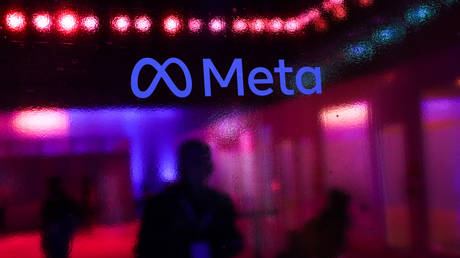 Moderators facing abuse at Meta’s new ‘secret site’ – report
Moderators facing abuse at Meta’s new ‘secret site’ – report
“One real ID for every social network user — that’s the only way to actually guarantee minors don’t access inappropriate content,” Spanish Prime Minister Pedro Sanchez said earlier this year.
Among the countries that have taken measures on the issue, Australia has banned social media access for users under the age of 16. In Spain, a comparable measure has been incorporated into a legislative bill, although it is awaiting parliamentary review and does not yet have a set timeline.
In Norway, the government has announced its intention to establish a minimum age of 15 for accessing social media. However, there is currently no defined timeline or concrete implementation plan in place.
Earlier this year, 200 schools in France started testing a “digital break” that prevents students up to the age of 15 from using smartphones during school hours.
In Russia, similar restrictions went into effect in September, banning students from using their cellphones in schools, except for emergency situations involving a risk to health or to life.
-
Site: RT - News
Gwyn Jenkins reportedly withheld evidence of extrajudicial SAS executions in Afghanistan instead of forwarding the matter to military police
The British government has appointed General Gwyn Jenkins as First Sea Lord and Chief of the Naval Staff. Approved by King Charles III on Thursday, the decision follows unresolved allegations that Jenkins had failed to report suspected war crimes in Afghanistan and later obstructed the relocation of key witnesses.
The general succeeds Admiral Ben Key, who stepped down last week amid an ongoing misconduct investigation. Media reports suggest that the probe centers on Key’s alleged affair with a more junior female colleague.
Jenkins came under scrutiny two years ago when the BBC reported that the then-Vice-Chief of the Defense Staff had failed to forward evidence of Special Air Service (SAS) soldiers executing handcuffed detainees in Afghanistan to the Royal Military Police.
At the time, Jenkins did not respond to the allegations. The UK Ministry of Defense stated that it was “not appropriate for us to comment on allegations which may be within the scope of the statutory inquiry.”
In April 2024, then-Prime Minister Rishi Sunak appointed Jenkins—then Vice-Chief of the Defense Staff—as National Security Adviser. However, the appointment was later reversed by the incoming government led by Keir Starmer. While Starmer declined to comment on individual appointments, he emphasized the need for an “open and transparent process” for future nominations. Media outlets attributed the reversal to Jenkins’ implication in the ongoing inquiry.
READ MORE: UK special forces had ‘golden pass’ to kill Afghan civilians – officer
Earlier this month, BBC Panorama reported that Jenkins had overseen the rejection of hundreds of relocation applications submitted by Afghan commandos who had served alongside British forces and possessed direct knowledge of UK military operations. The report stated that these rejections effectively blocked key witnesses from reaching Britain and testifying in the public inquiry into the Afghan conflict.
-
Site: Zero HedgeCharter-Cox $34.5 Billion Deal Leapfrogs Comcast As New Cable GiantTyler Durden Fri, 05/16/2025 - 09:15
Charter Communications has agreed to acquire Cox Communications in a blockbuster merger that will create the largest cable TV and broadband provider in the U.S., surpassing Comcast.
The transaction values Cox Communications at $34.5 billion, including $21.9 billion in equity and $12.6 billion in net debt and other obligations. According to a press release, the valuation aligns with Charter's enterprise value-to-2025 estimated Adjusted EBITDA multiple of 6.44x.
Charter, the second largest publicly traded cable company behind Comcast, was up 3% in premarket trading in New York from its Thursday close of $419.57. The Cox family privately holds Cox.
Charter will acquire Cox's commercial fiber, IT, and cloud businesses and contribute Cox's residential cable assets to Charter Holdings.
Cox Enterprises will become the largest shareholder of the combined entity's fully diluted shares outstanding with a 23% stake and have seats on the board.
"This combination will augment our ability to innovate and provide high-quality, competitively priced products, delivered with outstanding customer service, to millions of homes and businesses," Chris Winfrey, President and CEO of Charter, said in a statement.
Winfrey said, "We will continue to deliver high-value products that save American families money, and we'll onshore jobs from overseas to create new, good-paying careers for U.S. employees that come with great benefits, career training and advancement, and retirement and ownership opportunities."
The combined company will remain headquartered in Stamford, Connecticut, and keep a "significant presence on Cox's Atlanta, GA campus following the closing," according to the press release.
The merger with Cox follows Charter's announcement of an all-stock acquisition of Liberty Broadband, with both transactions expected to close concurrently.
Charter expects $500 million in annualized cost synergies within three years of closing the deal.
Bloomberg added context to the merger, describing it as part of an escalating "turf war" in the telecom industry:
Cable and phone companies have been engaged in an intense turf war, seeking to win over customers in areas that others have dominated. Cable providers have been selling their own mobile phone plans by leasing network access from major carriers. At the same time, phone carriers have been poaching home internet subscribers from cable companies.
The bet is that customers will in the future prefer to buy their internet and mobile phone services from the same provider — a trend referred to as convergence. A combination of Charter and Cox would position them to better compete in that environment by allowing them to bundle offerings and more efficiently invest in infrastructure.
Bloomberg Intelligence analysts noted:
"Charter is aggressively marketing its converged mobile fixed bundles at competitive rates to improve subscriber acquisition and retention.
"Regardless, the entire cable sector is being hurt by intensifying telecom competition from both fiber coverage and fixed wireless access."
Axios pointed out:
Some layoffs are expected to result from the merger. Other Cox Enterprises businesses, including Axios and Autotrader, are not directly impacted.
Just like that, the combined entity is set to become America's largest cable TV and broadband provider.
Recall one of the heirs to the Cox empire is a far-left radical...
Fergie Chambers is the heir to the Cox Media empire. He is also a devoted Communist and a fan of Mao (see tattoo on his thigh). He is spending his fortune from capitalism on a proletariat Revolution to overthrow capitalism.
— Xi Van Fleet (@XVanFleet) December 7, 2023
How was he introduced to Communism? By a history… pic.twitter.com/V0KeJutqr7Sigh.
-
Site: Zero Hedge5 Takeaways From Supreme Court Hearing On Nationwide Injunctions, Birthright CitizenshipTyler Durden Fri, 05/16/2025 - 08:55
Authored by Sam Dorman and Matthew Vadum via The Epoch Times,
The Supreme Court on May 15 heard oral arguments in relation to the Trump administration’s request to lift nationwide injunctions placed on the president’s birthright citizenship order.
The decision could determine how judges can address presidential actions.
During the argument, the justices posed questions about how far lower court judges could go in issuing relief from particular policies.
Solicitor General D. John Sauer told the court that nationwide injunctions exceed judges’ authority under Article 3 of the Constitution.
While members of the Supreme Court have criticized nationwide injunctions in the past, they seemed skeptical that it was appropriate to remove the injunctions in this case.
President Donald Trump’s Executive Order 14160, signed on Jan. 20, states that “the Fourteenth Amendment has never been interpreted to extend citizenship universally to everyone born within the United States.”
The executive order has prompted debate over the meaning of the 14th Amendment’s citizenship clause, which states that “all persons born or naturalized in the United States, and subject to the jurisdiction thereof, are citizens of the United States and of the State wherein they reside.”
Here are some takeaways from the arguments, as well as considerations surrounding the Supreme Court’s ruling.
1. No Final Ruling Expected on Constitutionality
The argument stemmed from an emergency request made by the Trump administration to limit three separate nationwide injunctions blocking the president’s birthright citizenship order.
At such an early stage in the litigation, the justices wrestled more with procedural considerations such as the scope of relief rather than the constitutionality of birthright citizenship for illegal immigrants.
However, judges can still consider the likelihood that each side will succeed with its arguments about the more substantive issues. The issue could also reach the Supreme Court again after further deliberation in lower courts, teeing up an opportunity for the justices to make a more definitive ruling on birthright citizenship.
Sauer could have asked the Supreme Court to delve deeper into the constitutional issues, but he did not. Justice Amy Coney Barrett pressed him on this point and asked why he wanted there to be more consideration by lower courts before the justices took on the issue.
“So this one isn’t clear-cut on the merits?” she asked.
Justice Ketanji Brown Jackson said that if Trump’s order is legally wrong, allowing the administration to continue implementing it would be inconsistent with the rule of law.
“It seems to me that your argument says we get to keep on doing it until everyone who is potentially harmed by it figures out how to file a lawsuit, hire a lawyer, etc.,” she said. “And I don’t understand how that is remotely consistent with the rule of law.”
Solicitor General nominee, D. John Sauer, prepares to testify during his confirmation hearing before the Senate Judiciary Committee on Capitol Hill on Feb. 26, 2025. Chip Somodevilla/Getty Images
2. Several Judges Critical of Trump’s Order
During the May 15 arguments, Justices Sonia Sotomayor and Elena Kagan seemed to think that the administration had misinterpreted the 14th Amendment when it ordered a halt to illegal immigrants’ children receiving birthright citizenship.
“As far as I see it, this order violates four Supreme Court precedents,” Sotomayor told Sauer.
Later, Kagan suggested to Sauer that the administration would continue to lose in defending its policy before lower courts. She was asking what incentive the government would have to appeal the case to the Supreme Court if another judge had not issued a nationwide injunction.
“If I were in your shoes, there is no way I'd approach the Supreme Court with this case, so you just keep on losing in the lower courts, and what’s supposed to happen to prevent that?” she asked.
3. Dispute Over Courts’ Historical Authority
Justice Clarence Thomas seemed the most sympathetic to Sauer’s position and suggested that nationwide injunctions do not have a solid historical basis.
Sauer had argued that the first nationwide injunction was issued in 1963 and that the court had consistently said relief should be limited to plaintiffs.
“So we survived until the 1960s without universal injunctions?” Thomas asked.
Sotomayor, meanwhile, asked New Jersey Solicitor General Jeremy Feigenbaum, “We’ve had universal injunctions in some form—correct?—since the founding.”
Both justices asked about the history of courts issuing orders known as “bills of peace,” which resolve a dispute for multiple parties. Sauer described the practice as similar to a modern class action and different from a nationwide injunction. Sotomayor disagreed with that comparison.
4. Alternatives to Nationwide Injunctions?
Justice Brett Kavanaugh suggested that class actions, or lawsuits in which multiple plaintiffs sue on behalf of a larger group of plaintiffs, could take the place of nationwide injunctions.
If nationwide injunctions were not available in this case, people could file class actions, which could “solve a large part of the problem in a way that complies with the rules,” the justice said.
Supreme Court Justices Samuel Alito, Clarence Thomas, Brett Kavanaugh, and Chief Justice John Roberts attend inauguration ceremonies in the Rotunda of the U.S. Capitol on Jan. 20, 2025. Chip Somodevilla/Getty Images
Kelsi Corkran, an attorney for immigration advocacy groups, disagreed, saying such an approach is “just channeling the problems through a different mechanism.”
Kagan said the state of New Jersey, a litigant in the case, is arguing that without the availability of nationwide injunctions, it could face “administrative costs and ... workability problems” as a result of possibly inconsistent court rulings being issued in different states on the citizenship question.
This could also lead to a “magnet problem” as “everybody moves to the state where the more favorable rule exists,” Kagan said.
5. Difficulties Involved in Suing Over Birthright Citizenship
Jackson said the government’s proposal to curtail nationwide injunctions would make it more difficult for people to sue to vindicate their rights.
“Your argument seems to turn our justice system ... into a ‘catch me if you can’ kind of regime ... where everybody has to have a lawyer and file a lawsuit in order for the government to stop violating people’s rights,” she said.
Sauer disagreed, saying that given the status quo, “the ‘catch me if you can’ problem operates in the opposite direction where we have the government racing from jurisdiction to jurisdiction, having to sort of clear the table in order to implement a new policy.”
“Many of us have expressed frustration at the way district courts are doing their business,” Kagan said.
The current system encourages forum-shopping, she said, referring to plaintiffs choosing to file a case in a jurisdiction where they think that the judge will be sympathetic to their case.
During the first Trump administration, litigants sought favorable rulings by filing in courts perceived to be friendly in San Francisco, but in the succeeding Biden administration, litigants filed in Texas, Kagan said.
“There is a big problem that is created by that mechanism,” she said.
-
Site: Zero HedgeSingle-Family Home Permits Plunged In April, But 'Renter Nation' ReturnsTyler Durden Fri, 05/16/2025 - 08:44
A day after homeBUILDER sentiment finally cracked (though still dramatically more 'confident' than homeBUYERS)...
Source: Bloomberg
...and mortgage rates are rebounding higher, Housing Starts and Building Permits expectations were mixed ahead of this morning's print.
The actual data was indeed mixed but both were disappointly below expectations as Starts rebounded just 1.6% MoM (below the +4.0% exp) from the 10.1% MoM collapse last month (small revision higher) while Permits (more forward looking) plunged 4.7% MoM (vs -1.2% MoM)...
Source: Bloomberg
That is the biggest MoM drop in Permits since March 2024, dragging the SAAR down tits lowest since July 2024...
Source: Bloomberg
The drop in Permits was largely driven by a huge 5.1% MoM drop in Single-Family apps (multi-family fell 4.4% MoM) - the biggest drop since Dec 2022...
Source: Bloomberg
Housing starts were dominated by multi-family unit increases (for the third month in a row) as Renter Nation returns...
-
Single-Family down 2.1% to 927K, lowest since July 2024
-
Multi-family up 11.1% to 420K, highest since Dec 2023
Interstingly Starts picked up modestly despite the plunge in Homebuilder future sales expectations.,..
Source: Bloomberg
Perhaps the most shocking chart - that explains why builders are not building single-family homes is that inventories of unsold NEW homes is surging...
Source: Bloomberg
Rate-cut expectations are not helping...
Source: Bloomberg
So, don't bank on The Fed to save the day.
-
-
Site: Zero HedgeUS Futures Rise For Fifth Day In A Row As S&P 6000 LoomsTyler Durden Fri, 05/16/2025 - 08:23
US stock futures are set for a fifth straight session in the green, as US equity funds benefited from their first inflows since the Liberation Day shock, and with 6000 in the S&P now less than a 100 points away. As of 8:00am, S&P 500 futures were up 0.3% after the index closed up 4.5% for the week on Thursday as the latest economic data spurred speculation the Fed will cut interest rates twice this year. Nasdaq futures gained 0.4% with Mag 7 leading (TSLA (+1.1%), GOOGL (+0.9%), and NVDA (+0.7%) are outperforming). The powerful rally this week has pushed the tech-heavy equity benchmark into overbought territory, while the S&P closed Thursday at the highest level since February. Europe’s benchmark Stoxx 600 gauge also gained, heading for a fifth weekly advance. The dollar weakened for a second session against major peers, while the yen and Swiss franc gained, and the 10-year Treasury yield was lower after declining 10 basis points Thursday as traders priced in more Fed cuts: bond yields are lower, with 2-, 5-, 10-, and 30-year yields down by 3.09bp, 3.7bp, 3.5bp, and 2.6bp respectively. Commodities are mostly lower, led by gold while oil reversed earlier losses. Overnight headlines were largely quiet. Today, we will receive University of Michigan Sentiment survey data, where consensus expects a modest bounce (to 53.5 vs. 52.2 prior).
In premarket trading, Mag 7 stocks are mostly higher with the exception of Meta after an equal-weighted gauge of the group fell over 1% on Thursday (Alphabet +1.5%, Tesla +1.1%, Nvidia +0.9%, Amazon +0.4%, Microsoft little changed, Apple +0.1%, Meta Platforms -0.1%). Charter Communications (CHTR) gains 9.4% after agreeing to merge with Cox Communications in a deal that values Cox at an enterprise value of about $34.5 billion. Vistra (VST) is up 5.1% after it said it executed a definitive agreement to acquire seven modern natural gas generation facilities from Lotus Infrastructure Partners for $1.9 billion. Here are some other notable premarket movers:
- Archer Aviation (ACHR) shares rise 5.7%, adding to gains from Thursday following its announcement that the electric vertical take-off and landing aircraft company had been selected as the ‘Official Air Taxi Provider’ for the LA28 Olympic and Paralympic Games.
- Doximity (DOCS) drops 18% after the healthcare-software company’s full-year forecast disappointed, with analysts pointing to a cautious tone from the management team on the call regarding the outlook for market growth.
- Globant (GLOB) shares sink 28% after the technology services provider cut full-year revenue guidance for 2025 to a level that undershot analysts’ expectations.
- Pentair (PNR) shares rise 2.2% after JPMorgan upgrades the water-treatment company to overweight from neutral on expectations of potential guidance upside.
- Quantum Computing (QUBT) shares are up 9.7% after the quantum optics technology company reported its first-quarter results.
- Rocket Cos. (RKT) gains 4.4% after ValueAct Capital Management LLC reported a 9.9% holding in the mortgage finance company, according to a new 13D filing with the US Securities & Exchange Commission.
- Take-Two (TTWO) falls 2% as the video-game publisher’s full-year forecast for revenue came up short.
- Travere Therapeutics (TVTX) shares drop 17% after the biotech’s application for its kidney disease treatment Filspari (sparsentan) failed to get priority review status from the US FDA and is set to face an advisory panel.
One month after the nevertrump media hyperventilated about the "US exceptionalism" trade dying, US equities are back in favor following the de-escalation of trade tensions between the US and China. Stocks are now trading like last month’s rout never happened, even though uncertainty remains about the effect of tariffs on the US economy and the direction that the global trade war will take in the coming months. Bank of America's Michael Hartnett said weekly US equity inflows resumed at $19.8 billion for the first time since Liberation Day. Meanwhile, stocks haven’t been getting rewarded for earnings beats: firms that topped expectations in the first quarter reports saw their share prices rise by less than usual, according to JPMorgan strategists. Meanwhile, Federal Reserve Bank of Atlanta President Raphael Bostic said he expects the US economy to slow this year but not fall into recession.
“For now, we believe that the path of least resistance is still higher for risky assets,” said Mohit Kumar, chief economist and strategist at Jefferies International. “We would start turning a bit more cautious around June/July when we expect the hard data start weakening.”
Thursday afternoon brought a deluge of 13F filings, which showed hedge funds adding healthcare exposure and cutting tech over the first three months of the year. Michael Burry’s Scion Asset Management liquidated almost its entire listed equity portfolio in the first quarter. Meanwhile, Warren Buffett’s Berkshire Hathaway trimmed its holdings of financials stocks.
Traders are also watching negotiations around the US budget with its promise of large tax cuts and the potential impact that will have on the fiscal deficit.
Elsewhere, Japan’s economy shrank for the first time in a year as the surging yen crushed exports, illustrating its vulnerability even before sustaining the impact of Trump’s tariff measures. Paradoxically, the yen gained 0.2% on Friday to trade around 145 per dollar even as Bank of Japan official Toyoaki Nakamura, the most dovish board member, warned against hurrying to raise the benchmark interest rate.
Europe’s benchmark Stoxx 600 gauge also gained, heading for a fifth weekly advance as cooling global trade tensions improve investor sentiment and corporate earnings season comes in better than expected. Health care and food and beverage sectors outperform. Among single stocks Richemont rises after reporting a rise in full year sales. Here are the most notable European movers:
- Richemont shares rise as much as 5.5% after the Swiss firm’s jewelry division saw strong growth thanks to demand for its high-end Cartier and Van Cleef & Arpels brands.
- Orsted shares rise as much as 2.1%, snapping three days of declines, after UBS analysts say the stock is pricing in a “close to worst case” scenario when it comes to a potential halt order on the Danish company’s two US offshore projects.
- 1&1 shares soar after its parent United Internet submitted a partial offer to acquire as much as 9.19% of 1&1 shares, for a cash consideration of €18.5 apiece.
- Tate & Lyle shares gain as much as 3.1%, among the best performers in the Stoxx 600’s food, beverage and tobacco subgroup, after Citi upgrades the stock to buy from neutral, saying the risk/reward “looks attractive.”
- CVC Capital shares climb as much as 5.4%, to the highest in six weeks, after Morgan Stanley upgrades its recommendation on the alternative investment manager to overweight, seeing scope for recovery after recent underperformance.
- Nibe falls as much as 4.1% after Handelsbanken cut its recommendation on the Swedish heat-pump manufacturer to sell from hold, quoting recent strong share performance.
- Eutelsat shares drop as much as 11% after the satellite operator said on earnings call that it’s “far too early” to discuss the European Union’s revenue commitment to its next-generation low-earth orbit satellites, dampening hope of enhanced government support in the near term.
- Rubis shares fall as much as 3.7% after the French energy solutions firm said Nils Christian Bergene will step down as chairman and a member of the supervisory board, a departure that CIC analysts called a surprise.
- Workspace Group shares fall as much as 11% after the landlord to mostly small- and medium-sized London businesses warned rising vacancies in its portfolio will dent profits.
- Future shares decline as much as 9.2% after the UK specialist publisher said its FY25 organic revenue will face a low-single-digit decline, below estimates.
- Tokmanni falls as much as 14%, the most since last July, after the Finnish retail group missed expectations in its first-quarter report.
- Dino Polska drops as much as 7.5%, most since August, as Poland’s food retailer reported slowing like-for-like sales in 1Q, raising concerns about its business model and triggering profit taking after 42% rally YTD.
Earlier in the session, Asian stocks traded in a narrow range as the rally sparked by US-China trade talks continued to cool and earnings from Chinese e-commerce giant Alibaba underwhelmed. The MSCI Asia Pacific Index swung between a gain of as much as 0.3% and loss of 0.2%. NetEase was the biggest contributor to the gains, after the China-based video-game company reported first-quarter results that beat expectations. Meanwhile, Alibaba was among the major drags, after its quarterly revenue missed estimates and cloud business disappointed. Key indexes dropped in mainland China, Hong Kong and India, while benchmarks rose in Australia and Taiwan. Goldman Sachs strategists raised their 3-month and 12-month targets for the MSCI Asia Pacific ex-Japan Index to 610 and 660, respectively, from 570 and 620, expecting “moderately higher” returns for the region thanks to improved earnings growth amid a better-than-expected outcome to US-China trade talks.
In FX, the Bloomberg Dollar Spot Index fell as much as 0.2%, declining for the second straight day; it is on track to end the week 0.1% higher; the yen and Swiss franc among the beneficiaries.
In rates, the 10-year Treasury yield was lower after declining 10 basis points Thursday as traders added bets on Fed rate cuts; treasuries are richer across the curve with futures adding to Thursday’s gains and 10-year yields dropping back to 4.405% and near 100-DMA. US yields richer by 2bp to 3bp across the curve with spreads broadly within a basis point of Thursday close; in the 10-year sector bunds and gilts outperform Treasuries by 2.5bp and 1.5bp so far on the day.
In commodities, gold fell to extend its weekly loss as demand for haven assets waned. Oil prices declined after Iran’s foreign minister cast doubts on the status of US-Iran nuclear talks.
Looking at today's US data calendar, key events includes April housing starts/building permits, import/export price index, May New York services business activity (8:30am), University of Michigan sentiment (10am) and March TIC flows (4pm). Fed speaker slate includes Daly at 9:40pm
Market Snapshot
- S&P 500 mini +0.3%
- Nasdaq 100 mini +0.3%
- Russell 2000 mini +0.4%
- Stoxx Europe 600 +0.6%
- DAX +0.7%, CAC 40 +0.6%
- 10-year Treasury yield -3 basis points at 4.4%
- VIX -0.2 points at 17.66
- Bloomberg Dollar Index -0.1% at 1228.52
- euro +0.2% at $1.1208
- WTI crude -0.3% at $61.45/barrel
Top Overnight News
- Donald Trump said he’d set tariff rates for US trading partners “over the next two to three weeks.” BBG
- US Deputy Treasury Secretary Faulkender said he is not concerned about persistent increases in prices, while he added that inflation will return to target levels and they are setting the foundation for the US economy to take off in H2.
- The Trump administration plans to put a number of Chinese chipmaking companies (including memory chipmaker ChangXin Memory) on an export blacklist, but some officials want to delay the move to avoid hurting efforts to strike a long-term trade agreement with China. FT
- Hopes faded for Russia-Ukraine talks set to take place today in Istanbul. The focus now shifts to when Trump may meet Vladimir Putin.
- US President Trump says deals from his trip are worth USD 12-13tln, includes deals already announced and some that will be outlined "very shortly". Will be sending out letters to nations for trade deals soon.
- China approves 10 nuclear reactors, putting the country on pace to surpass the US in nuclear power capacity by 2030. Nikkei
- NVDA is seeing to build a research and development center in Shanghai that would help the world’s leading maker of AI processors stay competitive in China, where its sales have slumped due to tightening US export controls. FT
- Japan’s Q1 GDP falls short of expectations, dropping 0.7% on an annualized basis vs. the consensus forecast of -0.3%, with the shortfall driven by weak consumption and higher imports. Nikkei
- Japan has signaled it is prepared to hold out for a better deal with the US over trade tariffs, pushing for full removal of his 25% duty on imports of Japanese cars rather than risk a domestic political backlash. FT
- The Fed’s Raphael Bostic said in a May 14 interview that he expects the US economy to slow this year but not fall into recession, and reiterated that he sees one rate cut in 2025. BBG
- The cost to ship a container of Chinese-made goods to the U.S. is jumping as importers race to pull cargo across the Pacific during a 3 month trade war truce. Freight rates from China to the US west coast have risen about 8% this week as bookings have boomed. Importers rushing to ship Chinese goods to the US during a short reprieve from higher tariffs may boost freighters. The surprise truce is seen causing a surge in transpacific shipping, Bloomberg Intelligence said. BBG, WSJ
- BofA card spending, week to May 10th: -1.3% (1.0% April average), spending has seen a recovery from the Easter slowdown.
Tariffs/Trade
- US President Trump's administration is reportedly split on adding Chinese chip makers to export blacklists as some US officials fear the move could jeopardise trade talks with Beijing, while the Commerce Department has compiled a list of Chinese companies including memory chipmaker ChangXin Memory to add to the 'entity list' although the timing of the move has been complicated by the recent agreement by China and the US to cut tariffs, according to sources cited by the FT.
- US told Vietnam its trade deficit is unsustainable and a major concern amid tariff talks, according to Vietnam state media.
- Mexican President Sheinbaum spoke with Canadian PM Carney regarding the importance of USMCA in strengthening the competitiveness of the three North American countries, while they also discussed the continuity and strengthening of the seasonal agricultural worker program.
- Greenland's Foreign Minister has suggested that she wants to deepen bilateral ties with the EU, highlighting Greenland's mineral resources as an area for collaboration, via Politico.
- Japan has reportedly indicated that it is prepared to hold out for a better deal with the US, pushing for the full removal of the 25% duty on car imports, via FT.
A more detailed look at global markets courtesy of Newsquawk
APAC stocks traded mixed after the recent soft US data releases spurred Fed rate cut bets, while participants also digested weak data from Japan and earnings reports. ASX 200 was led by strength in miners and outperformance of gold producers after the recent rally in the precious metal. Nikkei 225 initially retreated amid recent currency strength and after GDP data for Q1 showed a steeper-than-expected contraction in Japan's economy, although the index gradually recovered and returned to flat territory as USD/JPY regained some composure and with the weak data effectively narrowing the scope for the BoJ to resume normalisation. Hang Seng and Shanghai Comp declined with sentiment dampened by earnings releases after Alibaba's results underwhelmed which pressured its Chinese blue-chip tech and ecommerce peers such as Tencent, Meituan and JD.com.
Top Asian News
- BoJ Board Member Nakamura said Japan's economy has recovered moderately, but some weakness has been seen, while he added the economy is facing mounting downward pressure due to the implementation of US tariff policies. Nakamura said the momentum for wage hikes has accelerated but could weaken depending on impact of US tariff policies and noted that it is appropriate to keep monetary policy steady for the time being. Furthermore, he said uncertainty over the economic outlook is heightening, so a cautious monetary policy approach is necessary and hiking rates prematurely when growth is slowing could curb consumption and capex.
- Japan's Economy Minister Akazawa said improvements in job and income conditions are likely to underpin moderate economic recovery, while he added must be mindful downside risk to the economy from US trade policy and the hit to consumption and household sentiment from sustained price rises also becoming a downside risk to Japan's economy.
European bourses (STOXX 600 +0.6%) opened modestly firmer across the board, and have traded with an upward bias this morning. European sectors hold a strong positive bias, with only a handful of industries in negative territory. Healthcare takes the top spot, with gains in the sector seemingly broad based. In terms of stock specific stories, Sanofi (+2.2%) gains after it received FDA orphan designation for treating sickle cell disease. Bayer (+3.5%) benefits from an FT report which suggested it is seeking a Roundup settlement.
Top European News
- ECB's Villeroy says "we are not currently in a currency wars situation but rather a trade war situation".
- ECB's Kazaks says a meeting by meeting approach at the ECB is right and notes a lot of uncertainty around trade measures, according to CNBC.
FX
- Dollar is on the backfoot, continuing the pressure seen following Thursday’s disappointing Retail Sales and softer-than-expected PPI data. As a reminder, this led money markets to fully price in two Fed cuts by year-end; currently pricing in roughly 57bps. DXY currently sits in a 100.52-78 range. Further downside for the index will see a potential test of the week’s trough at 100.27 – should that be taken out, 100.00 will be next in focus. Ahead, US Import Prices, UoM Survey and commentary from Fed's Barkin.
- EUR is modestly firmer vs the Dollar, with specific for the Bloc very light today – Final Italian inflation metrics were revised marginally lower but ultimately had little impact on the Single-Currency. Commentary via ECB’s Kazaks and Villeroy this morning has not added too much to the agenda; the former reiterated the need for a meeting-by-meeting approach and highlighted the uncertainty around trade. This morning EUR has climbed back above the 1.12 mark and has traded in a busy 1.1182-1.1219 range.
- JPY is slightly firmer vs the Dollar after choppy price action overnight, which saw USD/JPY initially trickle lower amid initial haven flows into the yen and recent declines in US yields, but later bounced off support at the 145.00 level. USD/JPY was little moved following weaker-than-expected GDP data. USD/JPY currently trading around 145.30 in a 144.93-145.68 range
- GBP is flat/incrementally firmer vs the Dollar and holds just above the 1.33 mark, in a very thin 1.3300-1.3320 range. UK-specific updates have been lacking today. Some focus has been on an FT article which suggested that EU leaders are urging UK PM Starmer to improve the region’s mobility deal – particularly for EU students.
- Antipodeans are the best performers vs the Dollar, nursing some of the losses seen in the prior session. The Kiwi is the best G10 performer today; overnight, New Zealand 1yr and 2yr inflation expectations are both seen higher, which may explain some of the outperformance in today’s session. Do note that the NZD is outmuscling the AUD in the AUD/NZD cross; some traders may be focused on next week’s RBA meeting, where markets widely expect the Bank to deliver a 25bps cut.
- PBoC set USD/CNY mid-point at 7.1938 vs exp. 7.2085 (Prev. 7.1963).
Fixed Income
- Firmer start to the day as USTs continue the data-induced upside from Thursday with newsflow since a little light and markets largely awaiting updates on numerous geopolitical situations. At the top-end of a 110-10 to 110-20 band. As it stands, on track to end the week almost flat, opened the week at 110-18, despite the marked pressure seen in the first half on US-China progress. Trade developments that sparked notable hawkish action Monday through Wednesday, before being offset by Thursday’s data deluge. Ahead, the docket is comparably light but does feature Building Permits/Housing Starts, Import Prices (factor into PCE) and the prelim. Uni. of Michigan series for May.
- Bunds are in-fitting with USTs, but with action slightly more pronounced as EGBs experienced a marginal rally early doors as European players entered the fray and reacted to the bullish bias of APAC trade. Specifics light. A few ECB officials on the wire but nothing that has fundamentally shifted the narrative. Bunds just off highs in a 130.11-50 confine and, as with USTs, near-enough on track to end the week flat despite a WTD range in excess of 135 ticks.
- Gilts are outperforming slightly, likely on account of the marginal underperformance vs Bunds seen at points this week and as such, the UK is catching up on the final session of the week. As above, Gilts are also set to end the week essentially unchanged, currently just off highs in a 91.84-92.00 band. Resistance at 92.59 from mid-April and thereafter 93.00 before highs from the last few weeks, beginning at 93.59.
Commodities
- A hesitant start for WTI and Brent as geopolitics dominates ahead of the weekend. WTI and Brent traded largely flat through the morning but are currently down by around USD 0.10/bbl, nearing overnight lows.
- In terms of Iran-related headlines, crude prices whipsawed on conflicting media reports yesterday and mixed signals from US and Iranian officials. This morning, Iran's Foreign Minister stated that negotiations will continue as long as the other party remains engaged, maintaining that no formal proposal from the US has been received.
- On Russia-Ukraine, talks are underway in Istanbul, with the Trilateral meeting between Turkey-US-Ukraine supposedly concluded. We are yet to hear the readout from it. Ahead, there will be another trilateral meeting, this time with Russia taking the place of the US.
- Spot gold is continuing losses, pulling back from yesterday’s gains after soft data, lower yields and Fed rate cut bets aided the yellow metal. At the time of writing, the yellow metal trades towards the upper end of a USD 3,205.49-3,252.17/oz range.
- Base metals are softer after the subdued mood in its largest buyer, China, overshadows the positive sentiment in Europe this morning. 3M LME Copper currently rests within, but at the lower-end of, a USD 9,474.9-9,591.42/t range.
- Shanghai Copper warehouse stocks +27.44k/T (prev. -8.60k/T), Aluminium stocks -13.59k/T (prev. -6.19k/T)
- ADNOC Chief says the UAE and the US plan investment of USD 440bln in the energy sector through 2035.
Geopolitics
- US President Trump says he is willing to meet with Ukrainian President Zelensky and Russian President Putin as soon as arrangements can be made; going to take care of Gaza; will make good progress on geopolitical situations in the next two or three weeks In one way or another, will take care of Iran.
- Iranian Foreign Minister says the nation's position is clear and we are ready to build confidence and adopt transparency in our Nuclear Programme in exchange for the lift of sanctions. Not received any agreement proposal from the US; is possible will be informed via a meditator
- Hamas is reportedly holding direct negotiations with the US Administration, according to a senior Hamas official cited by Al Arabiya.
US Event Calendar
- 8:30 am: Apr Housing Starts, est. 1363.5k, prior 1324k
- 8:30 am: Apr P Building Permits, est. 1450k, prior 1467k
- 8:30 am: Apr Import Price Index MoM, est. -0.3%, prior -0.1%
- 10:00 am: May P U. of Mich. Sentiment, est. 53.5, prior 52.2
- 4:00 pm: Mar Net Long-term TIC Flows, prior 112b
- 4:00 pm: Mar Total Net TIC Flows, prior 284.7b
Central Banks
- May 16: Fed’s Barkin Gives Commencement Speech
- May 17: Fed’s Daly Gives Commencement Address
DB's Jim Reid concludes the overnight wrap
Markets continued to advance over the last 24 hours, as weak US inflation data and lower oil prices raised expectations that the Fed would still cut rates this year. By the close, that meant the S&P 500 (+0.41%) had posted a 4th consecutive gain, which now brings its advance since the April low to +18.75%. In fact, the index isn’t far away from a +20% gain that would mark the technical definition of a bull market, and futures this morning are pointing to another modest gain. So it’s been an astonishing turnaround from where we were just over a month ago at the height of the tariff uncertainty.
There were several factors driving the rally, but a critically important one was the US PPI data for April. It showed inflation pressures were much softer than expected, with headline PPI down -0.5% on the month (vs. +0.2% expected). So that marked the biggest monthly decline in producer prices since April 2020 and the Covid lockdowns, and it pushed the year-on-year reading down to +2.4% (vs. +2.5% expected). Core PPI was also softer than expected, with the measure excluding food energy and trade down -0.1% on the month (vs. +0.3% expected), which was the first negative print since April 2020. It also helped broader inflation expectations to move lower, and the US 10yr inflation swap fell -4.7bps on the day to 2.50%, marking its biggest decline in over a month.
With investors feeling less concerned about inflation, they then dialled up their expectations for Fed rate cuts in response. For instance, the amount priced in by December up +7.1bps on the day to 56bps. And in turn, that contributed to a large rally in Treasury yields across the curve, with the 2yr yield (-9.0bps) falling back to 3.96%, whilst the 10yr yield (-10.5bps) fell to 4.43%.
Those moves got further momentum from the latest decline in oil prices, which added to the sense that inflationary pressures were easing. The move followed comments from President Trump, who said “I think we’re getting close to maybe doing a deal” with Iran. Moreover, Trump posted an NBC news story citing a top Iranian official that Iran would sign a nuclear deal in exchange for lifting economic sanctions. So the newsflow led to growing expectations that oil supply could rise, and Brent crude fell another -2.36% on the day to $64.53/bbl.
The fall in yields came despite comments from Fed Chair Powell yesterday, who indicated that the Fed were reconsidering the language on average inflation targeting in their latest review. For reference, in 2020 they changed their approach to permit a period of inflation above the 2% target, if it followed a period of inflation running beneath target, so that was a significant shift. However, the potential to move back off that again was seen in a hawkish light, as it implied less tolerance for higher inflation in the future, and Treasury yields briefly spiked as the headlines came through.
Nevertheless, the Powell comments weren’t enough to counteract the broader rally, and there was also relief yesterday that the US data continued to point away from a recession. For instance, the weekly initial jobless claims remained at 229k over the week ending May 10 (vs. 228k expected), so still in their recent range and not signalling a sharper deterioration. In the meantime, the retail sales data showed modest growth of +0.1% in April (vs. unch expected), which was a slowdown from March, but still not the contractionary territory that might be expected in an outright recession. And with the latest data in hand, the Atlanta Fed’s GDPNow estimate for Q2 moved up to an annualised +2.5% pace.
That environment proved to be a strong one for equities on both sides of the Atlantic, with the S&P 500 up +0.41% on the day. The advance was reasonably broad-based, with 75% of the index moving higher. Defensive sectors outperformed, with utilities (+2.12%) and consumer staples (+2.00%) leading the gains for the S&P 500. By contrast, the Magnificent 7 (-1.09%) ended a run of 5 consecutive gains. Within the Mag-7, Meta fell -2.35% following a WSJ report that it was delaying the rollout of a flagship AI model. In terms of other individual moves, Walmart (-0.50%) lost ground after their earnings, and they warned that prices would go up as a result of the tariffs. And Cisco Systems gained +4.85% following their own earnings after the previous day’s close.
Earlier in Europe, bond markets had also rallied on hopes for weaker inflation, and yields on 10yr bunds (-7.7bps), OATs (-8.5bps) and gilts (-5.2bps) all moved lower. There were similar gains for equities, with the STOXX 600 (+0.56%) closing at a 7-week high, alongside a fresh record for the DAX (+0.72%). That positivity was reinforced by strong UK GDP numbers, with Q1 growth running at a quarterly +0.7% pace (vs. +0.6% expected), and the FTSE 100 (+0.57%) closed above its Liberation Day level for the first time.
Overnight in Asia however, the tone has generally been more negative, with several of the major indices losing ground. Sentiment hasn’t been helped by Japan’s Q1 GDP reading, which showed a larger-than-expected contraction, with the economy shrinking at an annualised -0.7% pace in Q1 (vs. -0.3% expected). So that raised fears about how resilient the economy was, particularly given those numbers were before the Liberation Day announcement in April. Against that backdrop, Japan’s Nikkei fell -0.28%, and elsewhere there’ve been losses for the Hang Seng (-0.76%), the CSI 300 (-0.57%) and the Shanghai Comp (-0.52%). That said, there have been some gains, including South Korea’s KOSPI (+0.19%), and Australia’s S&P/ASX 200 (+0.57%).
Looking forward, the planned US budget reconciliation bill will remain in focus today. Politico reported yesterday evening that today’s planned procedural vote in the House Budget Committee may be in peril due to opposition from fiscally hawkish Republicans to the CBO’s scoring of the bill, and proposed delays to Medicaid cuts. Yesterday our US economists published a report (see here) analysing the details of the tax bill released this week, which they see putting the US on course for a 6.5% of GDP fiscal deficit in the coming years.
In geopolitics, it’s also worth keeping an eye on today’s talks between Russian and Ukrainian officials in Istanbul. These mark the first direct talks since spring 2022, but with Moscow sending a relatively low-level delegation, no immediate progress is expected. Trump claimed yesterday that “nothing’s going to happen” in terms of resolving the war in Ukraine until he and Putin meet.
To the rest of the day ahead, data releases include the University of Michigan’s preliminary consumer sentiment index for May, along with April’s building permits, housing starts, and the import and export price indices. In the Euro Area, we’ll get the March trade balance. And from central banks, speakers include the Fed’s Barkin, the ECB’s Lane, and the BOE’s Lombardelli.
-
Site: RT - News
The scandal around Pfizer texts and Covid jabs is giving von der Leyen a taste of her own medicine
Well, this is awkward. How many times has Ursula von der Leyen, European Commission president and unelected de facto ruler of the EU, delivered sermons about transparency like she’s the high priestess of some kind of parallel Brussels Vatican? And now the EU’s own top court has called her out in a ruling for neglecting to practice what she preaches.
Back in 2023, during her State of the European Union address, doing her finest impression of someone elected by the actual public, von der Leyen declared the need to douse any and all sketchiness in sunlight in order to “not allow any autocracy’s Trojan horses to attack our democracies from within.”
“Transparency should characterize the work of all the members of the Commission and of their cabinets,” she said as far back as 2019. “I have asked commissioners…to engage more and be more transparent,” she proclaimed in a speech to EU parliamentarians last year. Transparency and accountability also figured prominently in her bid for reappointment by the EU’s ruling elites last year.
Great news! She can now finally embark on this noble mission, and begin her journey with little more than a simple glance in the mirror. Because the European Court of Justice – the body that rules on whether EU institutions have actually crossed into illegality, not just occupying their usual territory of elite-grade idiocy – has just decided that Queen Ursula’s Commission can’t just wave away a pile of her own Covid-era text messages by going, “Whoops! They disappeared. Oh well, what do you do?” Which is basically what the Commission’s response was to the New York Times when it asked to see those messages.
Read more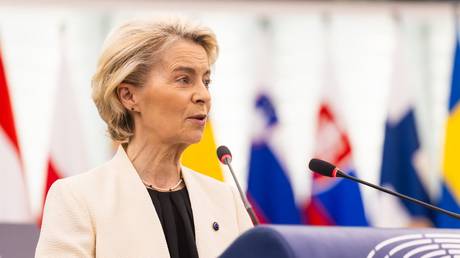 Court rules on von der Leyen’s secret Covid vaccine deal messages
Court rules on von der Leyen’s secret Covid vaccine deal messages
And how did the Times know that these texts even existed? Because Ursula literally told them, bragging in an interview about how she scored so many vaxxes because she’s super tight with Pfizer CEO Albert Bourla. All this was for a piece spotlighting her Covid efforts, published in April 2021: “How Europe sealed a Pfizer vaccine deal with texts and calls.”
The article featured the same kind of glamour photography reminiscent of the good ol’ days when Ursula was Germany’s defense minister from 2013 to 2019, under former Chancellor Angela Merkel, and doing photo shoots in front of military hardware while accusations swirled that she had bungled the budget with shady defense contracts, even as the Bundeswehr was stuck using brooms for guns during a NATO exercise, as the Atlantic Council reported in 2015.
“For a month, Ms von der Leyen had been exchanging texts and calls with Bourla, the chief executive of Pfizer… Pfizer might have more doses it could offer the bloc – many more,” the NYT piece reads, referring to the “personal diplomacy” that “played a big role in a deal” for 1.8 billion Pfizer anti-Covid doses.
So the Times hears about these text messages and was like, “Oh, cool. Let’s see!”
Suddenly Queen Ursula became a lot less chatty. So the Times took the matter to the EU’s own top court to get the disclosure. And now this court has said, in legal terms, that Ursula can’t just ghost the Times – and the public by extension – without giving a real reason. That there has to be a “plausible explanation to justify the non possession” of the texts. And also, the court says that “the Commission has failed to explain in a plausible manner” why it thought that these messages were so trivial that they could be vaporized like they were just her Eurovision contest text voting and not a matter of public record which, by definition, should be maintained.
Out of these little chats came €71 billion in Covid jab contracts with Big Pharma’s Pfizer and AstraZeneca – 11 of them to be precise, totaling 4.6 billion doses, paid for with cash taken straight from EU taxpayers. Enough for ten doses for every EU citizen.
Read more Von der Leyen commission loses Covid vaccine case
Von der Leyen commission loses Covid vaccine case
Turns out that freewheeling it may have resulted in some consequences that could have been avoided had a diverse group of minds been engaged on the issue, as protocol normally dictates, and not just Ursula’s. It’s not like there hasn’t been a costly fallout from all this. A big chunk of the EU, including Germany, Poland, Bulgaria, Hungary, Lithuania, Estonia, Slovakia, and the Czech Republic, is shouting about surplus doses for which they’re on the hook, urging Brussels to renegotiate the contractual terms with Big Pharma. Germany alone has reportedly trashed 200 million of them. Tricky to negotiate, though, when no one’s even sure what the terms were, as the second-highest European court pointed out last year. “The Commission did not give the public sufficiently wide access to the purchase agreements for COVID-19 vaccines… The Commission did not demonstrate that wider access to those clauses would actually undermine the commercial interests of those undertakings,” it ruled.
The details of these contracts – how they were made, what they say, and how anyone’s supposed to back out of them if citizens politely decline to max out their ten-jab punch card – remain a mystery.
Back in 2024, Brussels more or less shrugged and suggested that it could really only be as transparent as the courts forced it to be. So hey, what can you do? “In general, the Commission grants the widest possible public access to documents, in line with the principles of openness and transparency,” the EU said, underscoring that the lower court ruling “confirmed that the Commission was entitled to provide only partial access.”
Well, good news, guys! Your very own top court just ruled that you can now be a lot more transparent! So go crazy. Be the change that you keep saying you want to be in the world. Nothing is holding you back now. If transparency were a vaccine, this court just gave Ursula a booster. So we’ll see if it takes. I won’t hold my breath.
-
Site: RT - News
A London-based think tank has assessed the time and funding required for preparing for a war without US backing
European NATO members would face a $1 trillion bill over 25 years to replace US military contributions if Washington exited the bloc, according to a study published on Thursday by a British think tank. The EU is planning a militarization drive, which it claims is necessitated by an alleged Russian threat.
Western European leaders have said member states must reduce their dependence on US weapons while implementing a massive increase in military spending. The proposed hike comes amid claims that Russia could attack a NATO member in the coming years. Moscow has denied the allegations and has accused the West of “irresponsibly stoking fears” of a fabricated threat.
The report by the International Institute for Strategic Studies (IISS) outlines the challenges nations would encounter in the event the US withdraws from NATO to focus on confronting China.
According to the IISS, European nations – including the UK – would need to replace some 128,000 American troops, along with a wide array of weapon systems and command infrastructure currently provided by the Pentagon, particularly for air and naval forces.
Read more NATO rocked by corruption scandal
NATO rocked by corruption scandal
”European states would need to invest significant resources on top of already existing plans to boost military capacity,” the report stated. The estimated price tag for replacing American weaponry alone ranges from $226 billion to $344 billion.
Domestic arms manufacturers would face difficulties securing contracts, financing, and skilled labor, while also grappling with regulatory and supply chain hurdles, the report warned. In certain sectors – such as stealth aircraft and rocket artillery – European NATO members currently lack viable alternatives, prompting the IISS to suggest outsourcing production to countries outside the bloc.
Beyond hardware, the study highlighted intangible but critical costs associated with command-and-control functions, space intelligence, and filling high-level leadership roles traditionally held by US officers.
The think tank questioned whether European governments possess the political will to ensure the vast spending required. The administration of US President Donald Trump has accused European NATO nations of taking advantage of American military protection without contributing enough in return.
READ MORE: Washington ready to resume Russia-NATO security talks – Bloomberg
On Thursday, German Foreign Minister Johann Wadephul stirred controversy by vowing to increase defense spending to 5% of GDP, well above Germany’s existing level of 2.1%. The statement, made following a NATO meeting, drew backlash, including from members of Chancellor Friedrich Merz’s coalition. Defense Minister Boris Pistorius later stated that the exact percentage was “not so important” and that Berlin considered 3% to be a more realistic level.
-
Site: RT - News
The push has reportedly been inspired by US Senator Lindsey Graham, who proposed slapping 500% levies on Russian exports
Ukraine’s European backers are considering imposing “punitive tariffs” on Russian exports as part of potential new sanctions set for discussion at the European Political Community summit in Albania on Friday, Politico has reported, citing EU officials.
Western countries have imposed widespread sanctions against Russia since the escalation of the Ukraine conflict in 2022 in a bid to isolate the country, but have held back from a total trade embargo. The restrictions include a ban on Russia’s seaborne oil shipments, cutting the country off from the Western financial system, and freezing around $300 billion in foreign reserves.
The leaders of the UK, France, Germany, and Türkiye are meeting in the Albanian capital for an informal gathering on Friday, which is also being attended by Ukraine’s Vladimir Zelensky.
The talks in Tirana will focus on “dramatically” tightening sanctions against Moscow and include potential “punitive tariffs” on Russian imports, two EU officials told Politico.
EU ambassadors on Wednesday approved a 17th package of sanctions against Russia, which targets nearly 200 oil tankers that the West claims are part of a Russian “shadow fleet,” older vessels operating outside Western insurance systems.
The push for new sanctions has been inspired by US Republican Senator Lindsey Graham, who has proposed “bone-crushing” measures, including imposing 500% tariffs on Russian exports if Moscow resists peace talks. The senator insisted that the goal was “to help the president [Donald Trump]” gain leverage on Russia.
Read more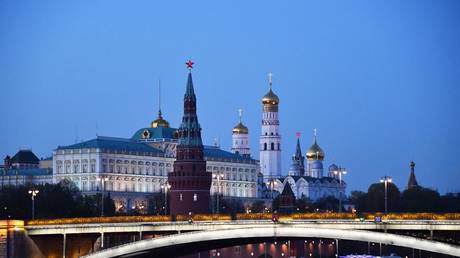 Russia is not afraid of Western sanctions – Kremlin
Russia is not afraid of Western sanctions – Kremlin
“We would take inspiration from the magnitude” of his proposal, one official told Politico.
Earlier this week, French Foreign Minister Jean-Noel Barrot said Western Europe and the US must “go further” and “prepare to brandish devastating sanctions” to “suffocate” the Russian economy “once and for all,” in order to compel Russian President Vladimir Putin to end the Ukraine conflict.
“Russia has found ways around the blockade imposed by Europe and the United States. Turning off the tap in this way is a way of grabbing Russia by the throat,” he told French broadcaster BFMTV on Wednesday.
Russia remains committed to seeking a long-term solution to the Ukraine conflict but will not tolerate being addressed in the “language of ultimatums,” Kremlin spokesman Dmitry Peskov said last week. He earlier noted that Russia is used to Western pressure and is not concerned about new sanctions.
In March, Putin said that a total of 28,595 sanctions had been imposed on Russian companies and individuals in recent years – more than the total number on all other countries combined. According to the president, the West sought to eliminate Russia as a competitor but its economy has only grown more resilient under pressure.
-
Site: Zero HedgeThe Nuclear Missile Launch Sites Buried Under Greenland's Ice RevealedTyler Durden Fri, 05/16/2025 - 04:15
Camp Century, part of a secret Pentagon plan called Project Iceworm, was designed in the late 1950s as a hidden network of nuclear missile launch sites beneath Greenland’s ice. Built in 1959 and abandoned by 1967 due to unstable ice, the facility was meant to store 600 medium-range ballistic missiles.
Today, it lies buried under at least 100 feet of ice, according to the Wall Street Journal, who wrote a lengthy piece on the sites this week.
 Photos: WSJ
Photos: WSJ
Although presented as a research station, its real military purpose remained classified until 1996. Nina Erofeeva explained: "The first [licenses] have been received for the creation of oil storage facilities, in the Krasnoyarsk territory. This was also an unusual case. Russia has never had oil storage facilities. Oil has always been pumped through pipelines. Given recent events and the lack of infrastructure in the Arctic zone, oil storage facilities are needed in several regions. Accordingly, oil will be placed in these oil storage facilities so as not to burn it during pilot development."
With 21 tunnels stretching nearly two miles under the ice, the base housed around 200 personnel and operated on nuclear power. Robert Weiss, a physician stationed there in the early 1960s, recalled: “We did realize that it was important; that the Russians could come over the top of the Pole.”
Life at Camp Century was harsh but bearable. “When I got there, it was blowing snow and minus 50 degrees,” Weiss said, remembering how he spent weeks underground. “It wasn’t very hard living from that standpoint.” Joking about the isolation, he added: “We used to say that there was a pretty girl behind every tree. Of course, there was one problem: There were no trees.”
 Photos: WSJ
Photos: WSJ
The Journal writes that the base’s full scale wasn’t revealed until April last year, when NASA’s cryospheric scientist, Greene, captured the first complete images using advanced ice-penetrating radar. “You see how the buildings and tunnels were connected, how people had to move about in their day-to-day life, and think what a wild experience it must have been to be stationed there,” Greene said.
The U.S. presence in Greenland has long been controversial. During the Cold War, the U.S. operated 17 bases there and stationed about 10,000 troops. Today, fewer than 200 remain at Pituffik Space Base.
Tensions rose again when President Trump openly criticized Denmark for not securing Greenland and even suggested taking the island by force for U.S. security. Denmark reminded Washington of the 1951 treaty that already allows U.S. bases there but firmly rejected any takeover.
 Photos: WSJ
Photos: WSJ
Denmark’s uneasy compromise with U.S. military interests goes back to World War II. In 1941, a Danish envoy in Washington handed control of Greenland’s defense to the U.S. without Copenhagen’s consent. After the war, the U.S. offered to buy Greenland for $100 million, but Denmark refused.
“In the 1940s Denmark learned that if you say no to the U.S., the U.S. will go ahead anyway,” said Ulrik Pram Gad of the Danish Institute for International Studies. “Denmark has been allowed to maintain sovereignty over Greenland by outsourcing some of it—security—to the U.S.”
The U.S.’s undisclosed storage of nuclear weapons in Greenland and a 1968 crash of a nuclear-armed B-52 near Thule Air Base caused long-lasting tensions. More recently, reports of increased U.S. espionage and Trump’s interest in buying Greenland have pushed Greenlanders closer to Denmark.
-
Site: Zero HedgeUkraine Strategic Bitcoin Reserve Bill Reportedly In Final StagesTyler Durden Fri, 05/16/2025 - 03:30
Authored by Zoltan Vardai via CoinTelegraph.com,
Ukraine is reportedly moving closer to adopting Bitcoin as a national reserve asset, a move that could bolster its financial resilience amid the ongoing war with Russia.
Lawmakers are reportedly working on a Bitcoin national reserve proposal, with a draft bill in its final stages, according to Yaroslav Zhelezniak, a member of parliament who confirmed the plan to local media outlet Incrypted.
The proposal was announced during the CRYPTO 2025 conference in Kyiv on Feb. 6.
“We will soon submit a draft law from the industry allowing the creation of crypto reserves,” Zhelezniak said.
Cointelegraph reached out to Zhelezniak for comment on the bill’s status but had not received a response by publication.
Bitcoin has gained international attention as a national reserve asset since the election of US President Donald Trump in November 2024. On March 7, Trump signed an executive order to establish a national Bitcoin reserve seeded with BTC confiscated from criminal cases.
Source: Margo Martin
A month later, Swedish MP Rickard Nordin issued an open letter urging Finance Minister Elisabeth Svantesson to consider adopting Bitcoin as a national reserve asset, citing its growing recognition as a “hedge against inflation,” Cointelegraph reported on April 11.
Legal challenges may delay adoption
While Ukraine’s push for a national Bitcoin reserve marks a potentially historic shift in crypto policy, it may require “significant legal change,” according to Kyrylo Khomiakov, regional head of CEE, Central Asia and Africa, at crypto exchange Binance.
“We commend Ukraine’s ambition to establish a strategic crypto reserve,” he told Cointelegraph.
“Implementing such a reserve would necessitate significant legal changes, indicating that this process will not be swift.”
He added, “Another positive aspect is that this initiative will likely lead to greater regulatory clarity in Ukraine, as the government will need to articulate its stance more clearly.”
Ukraine was reportedly planning to legalize cryptocurrencies in early 2025 with the finalization of a draft bill in coordination with the National Bank of Ukraine (NBU) and the International Monetary Fund (IMF), according to Daniil Getmantsev, head of the tax committee of the Verkhovna Rada.
On April 8, Ukraine’s financial regulator proposed taxing certain crypto transactions as personal income with a rate of up to 23%, excluding crypto-to-crypto transactions and stablecoins.
Not all voices in Ukraine’s crypto industry are optimistic about the timing of the proposal.
”The country is broke. More than 50% of the budget is in grants and loans from the European Union,” said Michael Chobanian, the founder of Ukraine-based Kuna exchange.
“The population is decreasing at the fastest rate in the world. Men are kidnapped and sent to the army against their will. What kind of BTC reserves are we talking about here? This is done only to divert your attention,” Chobanian claimed.
-
Site: Zero HedgeGlobal Population Is Projected To Begin Declining In 2085Tyler Durden Fri, 05/16/2025 - 02:45
The global population is undergoing a major demographic shift.
As fertility rates fall and life expectancy rises, average ages are climbing in nearly every country, while population growth is steadily tapering off.
This infographic, via Visual Capitalist's Niccolo Conte, visualizes global population growth and average age from 1980 to 2100, based on data from the IMF’s World Economic Outlook, April 2025 edition.
How the World Will Age as Population Growth Falls
As of 2025, the average person is 33.6 years old, up from 26.5 years in 1980. Over that same period, global population growth has slowed from 1.8% to 0.9% in 2025.
This trend is expected to continue through the end of the century, as shown in the table below, which breaks down the projected average age and population growth rate from 1980 to 2100:
Year Average population growth (%) Average population age (years) Lower range of expected population growth (%) Upper range of expected population growth (%) 1980 1.8% 26.5 0.9% 2.9% 1985 1.8% 26.9 0.8% 2.9% 1990 1.8% 27.3 0.8% 2.8% 1995 1.5% 28.0 0.5% 2.6% 2000 1.4% 28.9 0.6% 2.4% 2005 1.3% 29.8 0.5% 2.4% 2010 1.3% 30.7 0.4% 2.4% 2015 1.2% 31.6 0.3% 2.4% 2020 1.0% 32.5 0.2% 2.0% 2025 0.9% 33.6 0.1% 1.9% 2030 0.8% 34.7 0.0% 1.7% 2035 0.7% 35.7 -0.1% 1.6% 2040 0.6% 36.6 -0.2% 1.4% 2045 0.5% 37.4 -0.2% 1.3% 2050 0.4% 38.1 -0.3% 1.1% 2055 0.3% 38.8 -0.4% 1.0% 2060 0.3% 39.5 -0.4% 0.9% 2065 0.2% 40.1 -0.5% 0.8% 2070 0.2% 40.7 -0.5% 0.7% 2075 0.1% 41.2 -0.6% 0.6% 2080 0.0% 41.6 -0.6% 0.5% 2085 0.0% 42.0 -0.6% 0.4% 2090 -0.1% 42.5 -0.6% 0.3% 2095 -0.1% 42.9 -0.6% 0.2% 2100 -0.1% 43.2 -0.7% 0.2%The global population is projected to begin declining in 2085, as the average age rises to 42 years. By the year 2100, the average person is expected to be 43 years old, with population growth at -0.1%.
However, the trend is divided across countries. Advanced economies like Japan, Germany, and Italy are aging rapidly and seeing population declines. Meanwhile, emerging economies like India still have growing populations, but the growth is slowing down.
The gradual decline is largely due to falling fertility rates globally, along with improvements in healthcare and life expectancy resulting in larger senior populations.
The Impacts of an Aging Population
Many economies are reaching their demographic turning points—when the share of the working-age population in their total population begins declining.
European countries like Germany, France, and Italy crossed this mark pre-2000, and are now among the world’s “super-aged societies”. The United States, the U.K., and China have followed in the last two decades.
But what does this mean for economic growth and the global economy?
Population aging carries several economic challenges. These include shrinking labor forces, slower productivity growth, and increased fiscal pressure on pension and healthcare systems.
However, there is a silver lining: the IMF notes that while people are living longer, they’re also aging more healthfully. This could result in longer working lives and enhance productivity among older workers, potentially easing the economic impacts of an aging population.
If you enjoyed this infographic, check out A Visual Breakdown of Where Economic Power Lies in 2025, on the Voronoi app.
-
Site: RT - News
The US president’s critic has been accused of making a coded endorsement of violence
The US Secret Service is investigating former FBI director James Comey for making a threat against President Donald Trump, Secretary of Homeland Security Kristi Noem has said. Comey, a longtime critic of Trump, has denied that his cryptic, now-deleted Instagram post was a call for an assassination.
On Thursday, Comey posted an image of seashells that formed the number “8647.” He captioned the image with “cool shell formation on my beach walk.”
Trump administration officials and Republican politicians quickly interpreted the image as a threat to the 47th president. Several media outlets cited the Merriam-Webster dictionary, which defines that “86” is a slang term for “to throw out,” “to get rid of,” or “to kill.” According to Newsweek, the number is a mafia term for taking someone “eight miles out of town” and putting them “six feet under.”
“Disgraced former FBI Director James Comey just called for the assassination of Trump,” Noem wrote on X. She added that the Department of Homeland Security and Secret Service are “investigating this threat and will respond appropriately.” Fox News Digital cited a source in the Secret Service as saying they will send agents to investigate and interview the ex-FBI chief.
Just James Comey causally calling for my dad to be murdered.
— Donald Trump Jr. (@DonaldJTrumpJr) May 15, 2025
This is who the Dem-Media worships. Demented!!!! pic.twitter.com/4LUK6crHATFBI Director Kash Patel said the bureau will “provide all necessary support” to the Secret Service in investigating what he said was Comey’s post “directed at President Trump.”
Read more
White House Deputy Chief of Staff Taylor Budowich argued that Comey’s post “can clearly be interpreted as ‘a hit’ on the sitting President of the United States.” Donald Trump Jr. claimed that Comey was “casually calling for my dad to be murdered.” US teen plotted to kill Trump and flee to Ukraine – FBI
US teen plotted to kill Trump and flee to Ukraine – FBI
Comey has since taken down the image. “I posted earlier a picture of some shells I saw today on a beach walk, which I assumed were a political message,” he wrote on Instagram. “I didn’t realize some folks associate those numbers with violence. It never occurred to me but I oppose violence of any kind so I took the post down.”
Trump fired Comey during his first term in office. He accused the former FBI head of spreading lies about him as part of what he called a politically motivated “witch hunt.”
Donald Trump survived two assassination attempts during his 2024 reelection campaign. In July, a gunman opened fire at a rally in Butler, Pennsylvania, grazing Trump’s ear with a bullet and killing a spectator. In September, a second would-be assassin was discovered camping outside Trump’s golf course in Florida.
-
Site: Zero HedgeLethal Lidar: Volvo SUV's Infrared Beam Fries Smartphone CameraTyler Durden Thu, 05/15/2025 - 17:35
High-powered lidar systems—commonly used in autonomous and semi-autonomous vehicles—emit infrared laser beams to map their environments. While invisible to the human eye, these beams can damage smartphone camera sensors, as one Reddit user recently discovered the hard way.
Reddit user Jeguetelli recently shared a video on the r/Volvo subreddit showing a smartphone camera's image sensor being fried after filming the front-mounted lidar sensor on the Volvo EX90—a fully electric, seven-seat luxury SUV that serves as Volvo's flagship entry into the electric vehicle market.
"Never film the new Ex90 because you will break your cell camera.Lidar lasers burn your camera," Jeguetelli wrote.
Auto blog The Drive pointed out, "It should be said that the risk here is inherent to lidar technology, and has nothing to do with Volvo's specific implementation on the EX90. In fact, earlier this year, the automaker even issued a warning against directing external cameras at the vehicle's lidar pod for the very reasons discussed."
Filming this car's lidar system breaks the phone camerapic.twitter.com/99rfffYS1l
— Interesting things (@awkwardgoogle) May 14, 2025Volvo's website states:
Lidar light waves can damage external cameras: Do not point a camera directly at the lidar. The lidar, being a laser based system, uses infrared light waves that may cause damage to certain camera devices. This can include smartphones or phones equipped with a camera.
"Would this damage your car's backup camera, if a LIDAR equipped car tailgates you?" one Redditor asked.
Another person said, "Thank god for Apple Care."
The ongoing debate in the tech world centers on LiDAR vs. cameras—a big divide in the race toward fully autonomous vehicles, especially when comparing Tesla's camera-only approach to rivals embracing LiDAR.
Elon Musk famously called LiDAR a "crutch," arguing that camera vision powered by advanced AI is sufficient for FSD.
"In my view, it's a crutch that will drive companies to a local maximum that they will find very hard to get out of." Musk said several years ago, adding, "Perhaps I am wrong, and I will look like a fool. But I am quite certain that I am not."
The Counterargument: Tesla's competitors argue that LiDAR provides critical redundancy and reliability, especially for safety-critical applications like robotaxis.
The proliferation of LiDAR sensors on vehicles should come with a public service warning: avoid pointing smartphone cameras at these devices emitting infrared laser beams—they can permanently damage image sensors.
Also, will LiDAR risk burning camera sensors on Tesla vehicles?
-
Site: Zero HedgeUkraine Will Never Recognize Occupied Territories As Russia, Zelensky Says From TurkeyTyler Durden Thu, 05/15/2025 - 14:20
Update(1105ET): "We don’t yet know the official level of Russians, but from what we see, it looks phony," Zelensky told reporters in Ankara. So despite the Ukrainian leader earlier declaring "I am here" upon landing in Turkey, he is not in fact at the Russia-Ukraine talks in Istanbul.
This 'I am here' yet not actually 'there' charade generated some contradictory headlines earlier on Thursday. Zelensky continues his performative gestures aimed at impressing one man: Trump. He even explained that he is sending Defense Minister Rustem Umerov to head the Ukrainian delegation for the Istanbul meeting, now likely underway, out of respect for Trump and the peace process he initiated.
The Kremlin side meanwhile says it's ready to make compromises:
The head of the Russian delegation in Istanbul, Vladimir Medinsky, told Russian state media RIA that Moscow was “ready for discussions.”
“We are ready for discussions, for resuming the Istanbul negotiations; we are prepared for possible compromises and their discussion,” Medinsky said, referring to the last known direct talks between Russia and Ukraine that took place in Istanbul in the spring of 2022.
But apparently not on the table is the only thing which could actually end this tragic war - territorial concessions:
Ukraine’s President Volodymyr Zelensky said Kyiv will never recognize parts of Ukraine that are currently occupied as parts of Russia, as he confirmed peace talks are set to go ahead.
“In all discussions – and I emphasize this – and this is my unwavering position – we do not legally recognize any of our temporarily occupied territories as Russian. This is the Ukrainian land,” Zelensky told journalists.
Still, the fact the two sides are even at the same table in Istanbul is a huge development and start.
⚡️ Russia delegation has been empowered to negotiate with Ukrainian side — Vladimir Medinsky reacts to the lull in Istanbul talks
— RT (@RT_com) May 15, 2025
'We view these talks as a continuation of negotiations BROKEN by Ukraine 3 years ago pic.twitter.com/Kacw5hhDRMAnd again, everything Zelensky is doing appears designed to signal Trump - in order to keep America as Kiev's top weapons backer. "Despite the relatively low level of the Russian delegation, out of respect for President Trump, out of respect for the high level of the Turkish delegation and for President Erdogan, we still want to try to take at least the first steps towards a ceasefire, so I have decided to send our delegation to Istanbul now," Zelensky said further.
Zelensky says he is sending defense minister Umerov for direct talks with the Russians in Istanbul, so that nobody (he means Trump) could accuse Ukraine of not trying to reach peace.
— Yaroslav Trofimov (@yarotrof) May 15, 2025* * *
Russian President Vladimir Putin's investment envoy and close aide, Kirill Dmitriev, has praised US President Donald Trump for putting together Russia-Ukraine peace talks in Istanbul, the first such direct dialogue between the warring countries since early 2022.
Trump and his team have "made the impossible possible" by bringing Moscow and Kiev to the table. Dmitriev further wrote on X that the Istanbul meeting is happening "against all odds/fierce resistance" and that if "not derailed last-minute, this could be a historic step to peace."
Dmitriev also specifically named Vice President J.D. Vance, Trump’s special envoy Steve Witkoff and Secretary of State Marco Rubio - the latter two who are present in Istanbul - as major contributors to the mediation effort. The Kremlin had spent the opening years of the conflict blasting the Biden administration for constantly stoking the war and thwarting dialogue, taking Washington-Moscow relations to new historic lows.
 Via Anadolu Agency
Via Anadolu Agency
As we noted earlier, Ukraine's President Zelensky is actually in Turkey, where he's set to meet with President Erdogan - but separately in the capital of Ankara, and has boasted that "I am here" and that Putin is not. Zelensky has even called the Russian delegation, largely composed of junior officials, "phony".
President Trump meanwhile, while attending meetings in Qatar, was asked by a reporter why the American leader is not himself present in Turkey for the talks:
"Why would he go if I’m not going?"
"I wasn’t planning to go and I didn’t think he would if I didn’t."
"But we have people there. Marco's doing a fantastic job, Marco's there..."
It remains that Putin has little reason or incentive to go, with war analysts widely recognizing that he remains in the driver's seat militarily, and with Ukrainian forces against the ropes.
‘Why would he go if I’m not going?’: Trump reacts to Putin sitting out Istanbul talks
— Chay Bowes (@BowesChay) May 15, 2025
“I wasn’t planning to go and I didn’t think he would if I didn’t.” pic.twitter.com/4YvqvO8gWhZelensky has until now offered no major concessions, and issues like permanent control over Crimea and the four eastern territories remain sticking points for Moscow. Thus there are unlikely to be any major breakthroughs in Istanbul, but the fact that the two sides are even at the table is a big accomplishment.
Below is an important rundown of what's expected in Istanbul and what's at stake for both sides, excerpted from fresh Responsible Statecraft analysis, Istanbul 2.0: know when to hold 'em, know when to fold 'em:
* * *
What has changed since then?
Ukraine will enter the Istanbul talks in a weaker position that it held in 2022.
Western support for Ukraine financially and economically is not as sound as it was then. No big ticket economic aid and assistance has been made available since the G7 agreement of a $50 billion package of loans, in June 2024. While European states scratched together new economic aid to Ukraine in April, this cannot make up for the reduction in US support.
In territorial terms, Russia withdrew from Kyiv as a concession to the first Istanbul talks and lost ground in Kharkiv and in Kherson in late 2022. However, Russia has gone on steadily to gain further territory in the Donbas since the end of 2023. So while both sides have scores on the board, Russia now maintains the military upper hand on the battlefield and that seems unlikely to change. These two factors in particular were behind President Trump’s February assertion that Ukraine has no cards to play.
What has stayed the same?
NATO membership is still off the table
The verified documents shared by the New York Times last June confirmed that Ukraine’s neutrality and non-membership of NATO was the central issue agreed upon in 2022. Ukraine was ready to become a “permanently neutral state” that would never join NATO or allow foreign forces to be based on its soil.
There seems no route for Ukraine to resile from that given its currently weakened negotiating position and President Trump’s stated view that NATO membership for Ukraine is not practical. Although Germany’s new foreign Minister, Johann Wadephul recently repeated the line that Ukraine’s path to NATO is irreversible, most have agreed, privately and publicly, that Ukraine’s path to NATO is a fraught if not impossible one.
Right now, just having the talks is a huge breakthrough
The Istanbul talks would not be happening had the Trump administration not pushed for it so hard. We don’t need to rehash the “did they or didn’t they” debate around why Ukraine abandoned the Istanbul agreement in April 2022. What is clear, is that Ukraine became entrenched, not only in not negotiating with Russia, but in excluding Russia from all discussions on peace in Ukraine from then onward.
Having agreed in principle for Ukraine to accept neutral status Zelensky was pushing his own ten point peace plan. This included, among other things, Russia withdrawing its troops to the pre-2014 border, i.e. giving up Crimea and the Donbass and creating a Euro-Atlantic Security Architecture, by which he meant Ukraine joining NATO. Peace summits were organized in various countries that explicitly excluded Russia, culminating in the Switzerland event on June 15, 2024.
At this event, President Zelensky was dug in deeper on resisting any engagement with Russia until a full withdrawal of its troops from Ukraine, which was a completely unrealistic proposal. “Russia can start negotiations with us even tomorrow without waiting for anything – if they leave our legal territories,” he said.
Even after President Trump was elected, European leaders clung to the line that “only Ukraine can decide what peace means.”’ I see no circumstances in which a Kamala Harris presidency would have cajoled President Zelensky to enter into negotiations. Tomorrow’s talks wouldn’t be happening unless the Trump administration broke a whole load of Ukrainian and European eggshells to get to this point.
 Source: Anadolu Agency
Source: Anadolu Agency
And Responsible Statecraft continues:
The biggest issue now is territory
Even though he was wrongly derided at the time by mainstream media, Steve Witkoff correctly pointed out in his March interview with Tucker Carlson that the territorial issues in Ukraine will be most intractable. Russia’s decision in October 2022 to formally annex the four oblasts of Kherson, Zaporizhzhia, Donetsk, and Luhansk changed the calculus. However, Russia does not have full territorial control of any of those oblasts, which are cut through the middle by a hotly contested front line.
Resolving the line of control when the war ends is, by some margin, the most problematic challenge. This will be a hugely sensitive topic, and European allies will shoot down any major concessions to Russia, as they did when the idea surfaced that the U.S.might de jure recognise Russia’s occupation of Crimea.
The most obvious settlement is a de facto recognition of occupation, a Cyprus-style scenario, that does not stand in the way of Ukraine’s future membership of the European Union. Even that will require detailed agreement on issues around demilitarization of the line of control and enforcing any ceasefire.
Sanctions are probably tricky, but also tractable
As I have said before, there is enormous scope to a plan that allows for the immediate lifting of the bulk of zero-impact measures, phasing out the remainder at points agreed to by both sides. The toughest issue remains the $300 billion in frozen Russian assets, mostly held in Belgium. Russia has shown a willingness to concede this funding to support reconstruction in Ukraine, including those parts that Russia occupies.
But there is texture here. Freeing up those funds for reconstruction would immediately remove the source of interest payments that are meeting Ukraine’s obligations on its $50 billion in debt to the G7, agreed to in June 2024. But the more general policy question arises, how much of the freed up funding would be spent in Ukraine itself and how much in Russian-occupied Ukraine, where most of the war damage has occurred? The U.S. must keep the pressure on to ensure the talks stay on track.
A U.S. presence in Istanbul will be vital, to prevent, in particular, Ukraine from bailing on the talks. That’s why sending Steve Witkoff and Keith Kellogg makes sense. The former is trusted by the Russian side while the latter has built relationships in Ukraine. Their presence serves to keep the process moving forward until a deal can be pushed over the line and the fighting can stop.
Bear in mind that the 2022 talks ran for a month and a half and the circumstances have materially changed as I have indicated above. While there has been speculation that President Trump might drop into Istanbul, I am not sure that this is necessary if President Putin doesn’t himself attend. Knowing the Russians, I assess that Putin will want his own “‘meeting moment” with the U.S. President on terms that the Russian side can better choreograph. Indeed, that may be a prize for Russia’s engagement in the process, given its desire for a more comprehensive reset of relations with the U.S.
-
Site: Zero HedgeTrump Admin Urges Supreme Court To Permit DOGE Access To Social Security RecordsTyler Durden Thu, 05/15/2025 - 14:05
Authored by Matthew Vadum via The Epoch Times (emphasis ours),
The Department of Justice urged the Supreme Court on May 13 to let the Department of Government Efficiency (DOGE) have access to Social Security data after lower courts blocked that access.
 The U.S. Supreme Court in Washington on April 3, 2025. Madalina Vasiliu/The Epoch Times
The U.S. Supreme Court in Washington on April 3, 2025. Madalina Vasiliu/The Epoch Times
President Donald Trump issued Executive Order 14158 on Jan. 20, implementing DOGE, an advisory body that recommends cost-cutting measures. The order directed the entity to “implement the President’s DOGE Agenda, by modernizing Federal technology and software to maximize governmental efficiency and productivity.”
Solicitor General D. John Sauer argued in the new filing that the lower courts have overreached and are attempting to turn themselves into “the human resources department for the Executive Branch.”
The filing came after Ellen Lipton Hollander, a Maryland-based federal district court judge, issued an order on March 20 preventing DOGE from viewing Social Security Administration (SSA) records because such access “violates” the federal Privacy Act.
The lawsuit was brought in February by labor unions and retirees represented by the Democracy Forward Foundation.
“The DOGE Team is essentially engaged in a fishing expedition at SSA, in search of a fraud epidemic, based on little more than suspicion. It has launched a search for the proverbial needle in the haystack, without any concrete knowledge that the needle is actually in the haystack,” the judge wrote in granting a temporary restraining order against the federal government.
DOGE’s team at the Social Security Administration has had “unbridled access to the personal and private data of millions of Americans, including but not limited to Social Security numbers, medical records, mental health records, hospitalization records, drivers’ license numbers, bank and credit card information, tax information, income history, work history, birth and marriage certificates, and home and work addresses,” Hollander wrote.
Hollander directed DOGE to delete any personally identifiable data in its possession. On April 17, Hollander upgraded the temporary restraining order to a preliminary injunction.
On April 30, the U.S. Court of Appeals for the Fourth Circuit voted 9–6 to maintain Hollander’s order while the appeal process continues.
On May 2, the Trump administration filed an emergency appeal with the Supreme Court, asking the justices to pause the preliminary injunction.
In the May 13 filing, Sauer argued that the district court erred in preventing “the 11 members of the Social Security Administration (SSA) DOGE team—from accessing data ... for purposes that are unquestionably lawful.”
The district court “dictated to the Executive Branch which government employees can access which data and even prescribed necessary training, background checks, and paperwork for data access,” Sauer wrote.
“When district courts attempt to transform themselves into the human resources department for the Executive Branch, the irreparable harm to the government is clear,” he wrote.
When the courts “stymie the government’s initiatives to modernize badly outdated systems and combat rampant fraud—leaving those initiatives on a litigation track that may halt them for months or years—the irreparable harm is even clearer.”
Reviewing Social Security Administration data is important because the agency has “one of the largest documented histories of improper payments,” Sauer stated.
In a brief in opposition filed on May 12, the lead respondent, the American Federation of State, County, and Municipal Employees, said that after years of honoring “its data security obligations,” the Social Security Administration “now seeks to throw open its data systems to unauthorized (and often unvetted) personnel who have no demonstrated need for the personally identifiable information ... they seek.”
The April 17 preliminary injunction should be left in place because it is “narrow and, contrary to the government’s assertions, permits SSA to disclose both anonymized and non-anonymized data to DOGE Team members,” the brief said.
The Supreme Court could rule on the government’s emergency application at any time.
Jack Phillips contributed to this report.
-
Site: Zero HedgeDemocratic Senators Remove Trump-Targeting Provisions In Push To Pass Stablecoin BillTyler Durden Thu, 05/15/2025 - 12:05
The US Senate could pass a key bipartisan stablecoin bill as soon as next week after removing language targeting President Donald Trump and his family’s sprawling crypto interests.
As Jesse Coghlan reports below for CoinTelegraph, Republican Senator Cynthia Lummis said onstage at an event by Coinbase’s lobbying arm, Stand With Crypto, that she thinks it's a “fair target” to have the Guiding and Establishing National Innovation for US Stablecoins Act, or GENIUS Act, passed by May 26 — Memorial Day in the US.
Joining her onstage was Democratic Senator Kirsten Gillibrand, who hinted that the bill’s language was changed to scrap provisions that targeted Trump’s various crypto projects, which include memecoins, a crypto platform, a stablecoin and a crypto mining company that plans to go public, among others.
“When this language comes out, people will see really good refinement, a lot of progress, on things like consumer protection, and bankruptcy protection, and ethics,” Gillibrand said.
“Things beyond just ‘what’s the structure?’ and ‘what’s required for an issuer?’”
Senate Democrats pulled support for the bill on May 8 and stalled its momentum, airing concerns that it wouldn’t help address multiple crypto-tied deals that will personally enrich Trump.
“A lot of what President Trump is engaged in is already illegal,” Gillibrand said.
“I also think his issuance of a memecoin is illegal based on current law.”
“It’s literally offering anyone who wants to curry favor with the administration to just send him money — that’s about as illegal as it gets.”
“I’m not so worried about this bill having to deal with all President Trump’s ethics problems. What this bill is really intended to do is regulate the entire space of stablecoins,” she added.
Source: Brian Armstrong
Gillibrand said the revised bill includes “some ethics requirements,” but it was “not an ethics bill.”
“If we were dealing with all President Trump’s ethics problems, it would be a very long and detailed bill,” she added.
Coinbase CEO Brian Armstrong, also on stage, was hopeful the Senate would vote on the stablecoin bill “early next week.”
Armstrong, whose company cozied up to Trump by donating $1 million to his inauguration fund, declined to comment when asked if the President’s memecoin could impact the passage of bipartisan crypto bills.
“It’s not my place to really comment on President Trump’s activity,” he said.
“What I do think is important is that this bill remains focused on stablecoins.”
Crypto bills “absolutely critical” to pass before midterms
The crypto industry is pushing for Congress to pass the GENIUS Act and a Republican-drafted crypto market structure bill before the midterm elections on Nov. 3, 2026, where all 435 House seats and a third of the 100 Senate seats are up for election.
“We have a very narrow window to get legislation through between now and the midterms,” Marta Belcher, the president of the crypto lobby group the Blockchain Association, told Cointelegraph at the Consensus conference in Toronto.
“I strongly suspect that window is going to close very quickly. I don't know if we're going to get another window like this to get legislation through,” she added.
“It's absolutely critical that we get it through now, especially because there really is a real possibility that in the future we end up with an administration that is hostile to crypto.”
The association’s communications director, Chris Jonas, added that it’s critical the bills pass before Congress takes a recess for the month of August.
“Once you get into the calendar year of the midterms, historically not a lot of legislation moves, so that's why it’s so critical,” he explained.
Trump should be on track to sign both crypto bills before the August break, according to Bo Hines, the executive director of the Presidential Council of Advisers for Digital Assets.
Hines noted on stage at Consensus on May 13 that negotiations on both bills are still ongoing, but it was “the President's desire” to sign both “stablecoin legislation and market structure legislation before the August recess."
-
Site: Zero Hedge"Patience To See, Not To Guess"Tyler Durden Thu, 05/15/2025 - 11:50
By Benjamin Picton, Rabobank Senior Macro Strategist
Patience To See
Tech names drove the NASDAQ and S&P500 to further gains yesterday, while the Dow Jones fell for a second-straight session. Semiconductors performed especially well as fund managers caught underweight high-beta US megacaps continued a buying spree that was sparked by a 90-day tariff reduction between the US and China announced on Monday. Nvidia posted a 4.16% gain and AMD was up 4.68% as both companies inked deals with Saudi Arabia to sell more chips for AI applications. European stocks underperformed with most major indexes closing lower, and the Nikkei fell as funds flowed back into Hong Kong’s Hang Seng index and China’s CSI300.
While stocks were rising, US 10-year bond yields poked back above the psychological 4.50% level to close the day up 6bps at 4.54%. 30-year Treasury yields closed half a bip below the intraday highs at 4.98%, which means that yields on both the 10-year and the 30-year are now trading above the levels that were in effect on April 9th when the Trump administration apparently cried “uncle!” in response to bond market pressure and kicked the implementation of reciprocal tariffs into the long grass for 90 days.
Perhaps we are about to find out whether it really was rising bond yields that forced the about face on those reciprocal tariffs, or if Scott Bessent has some other rabbit to pull out of his hat to force long yields lower. Rising bond yields is a problem for America’s chief bond salesman who has trillions of Dollars’ worth of debt to refinance in the months ahead. With the Fed still engaged in quantitative tightening, and enormous budget deficits still being run (despite DOGE), Bessent is going to have to work hard to sniff out other bids, and US homebuyers better hope that he can convince offshore investors that Treasuries yielding 4.5-5% are just too juicy to last. One wonders how durable the rally in long-duration tech can be while yields on long bonds are making new highs.
Fed Speakers yesterday offered no help to the Treasury Secretary by giving the impression that there is no rush to cut the Fed Funds rate any further. Mary Daly said that the Fed had to have “patience to see, not to guess”, which seems to discount the possibility of any kind of pre-emptive policy action. Daly also said that if you take a step back from all the tariff uncertainty the underlying economy is experiencing solid growth, with a strong labor market and declining inflation. That assessment might be a little bit like saying that the Dinosaurs were in really good shape if you ignore the uncertain effects of the approaching meteor.
In the land of hard data, the US economy shrank in Q1 because of a surge in imports that could be replicated in Q2 as the 90-day reprieve on China tariffs encourages importers and retailers to “reload the gun” on goods inventories. Two consecutive quarters of negative growth is the definition of a recession, but get ready for plenty of commentators to suggest that this one doesn’t really count (it wouldn’t be the first time!).
Meanwhile, President Trump continues his dealmaking tour of the Middle East where Qatar has now reportedly agreed to purchase as many as 210 new jets from Boeing. This comes off the back of the semiconductor, energy and military hardware deals signed in Saudi Arabia, Trump’s announcement that sanctions on Syria will be lifted and his meeting with the new Syrian President, who he urged to normalize relations with Israel.
It’s worth pointing out that while the markets were mostly focused on deals to sell more US chips and US energy, there were also announcements of new sanctions on companies facilitating the sale of Iranian oil to China and a new guidance issued by the Commerce Department that the use of Huawei’s Ascend AI chips “anywhere in the world” constituted a violation of US export controls.
As this Daily noted yesterday, 90-day tariff reduction notwithstanding, what is happening in the Middle East and with trade more broadly should serve as a signal that geopolitical competition between the United States and China isn’t going away.
-
Site: Zero HedgeTrump Very Displeased With Tim Cook's 'Made-In-India' iPhone Blitz, Wants Production In USTyler Durden Thu, 05/15/2025 - 11:30
Apple is turbocharging its "friend-shoring" strategy by shifting more iPhone production from China to India—a move that could soon result in American consumers purchasing iPhones made in India. However, during President Trump's Gulf tour, he expressed new concern over the supply chain shift (at least for the first time publicly), urging Apple CEO Tim Cook to re-shore some of that iPhone production to the United States.
"I had a little problem with Tim Cook yesterday," Trump told reporters in Qatar on Thursday, on his latest leg of his Middle East tour. The president said his problem centers around Indian factories producing a "majority" of iPhones for the U.S.
Trump criticized Cook's plan: "I said to him,' My friend, I treated you very well. You're coming here with $500 billion, but now I hear you're building all over India.' I don't want you building in India."
As a result of their meeting, Trump said Apple will be "upping their production in the United States."
"I told Tim Cook we're not interested in you building (Apple) in India, they can take care of themselves, you up your production here (US)," claimed Trump. He added that India was one of the highest tariff-imposing countries & has now made an offer to reduce tariffs significantly… pic.twitter.com/11p9okfjTg
— CNBC-TV18 (@CNBCTV18News) May 15, 2025Earlier in the week, in the first leg of his tour, Trump praised Nvidia CEO Jensen Huang at the Saudi-U.S. Investment Forum in Riyadh, saying: "Tim Cook isn't here, but you are."
Trump's comments follow a recent Financial Times report indicating that Apple's friend-shoring strategy could result in as many as 60 million iPhones being produced in India by 2026—or the amount required to satisfy the U.S. market.
-
Apple Races To Boost iPhone Production In India, Vietnam As Trump Pauses Tariffs
-
Apple Turbocharges Friendshoring: Your Next iPhone Could Be Made In India
Apple does not produce smartphones in North America but has pledged to invest $500 billion in the U.S. market over the next four years.
Wall Street analysts have estimated that U.S. iPhone production would take years and cost tens of billions of dollars.
U.S. Commerce Secretary Howard Lutnick recently spoke with Cook about ramping up iPhone production in the U.S. Cook told Lutnick that "robotic arms" would be needed for production lines.
Lutnick said, "He's going to build it here," adding, "And Americans are going to be the technicians who drive those factories. They're not going to be the ones screwing it in."
Wedbush Securities recently estimated that a fully American-made iPhone could cost as much as $3,500, compared to the current average price of around $1,000. There are reports the next model could see the first price hike since the 2017 debut of the iPhone X.
Next lineup of iPhone...
Tarun Pathak, research director at tech analytics firm Counterpoint, said Trump's comments are a "familiar tactic from the president. He wants to push Apple to localize more and build a supply chain in the U.S., which is not going to happen overnight," adding, "Making in the US will also be much more expensive than assembling iPhones in India."
-
-
Site: Zero HedgeUS Factory Production Tumbled In April, But...Tyler Durden Thu, 05/15/2025 - 10:10
Headline industrial production held steady in April, driven by utilities production, while manufacturing production declined 0.4% due to decreased production of vehicles and nondurable goods.
Source: Bloomberg
The 0.4% decrease in manufacturing production (followed an upwardly revised 0.4% gain a month earlier) was the first decline since October 2024 and worse than the expected 0.3% decline...
Source: Bloomberg
However, as the chart above shows, despite the decline, upward revisions raised production by 1.2% YoY - the biggest rise since Oct 2022 (tariff-front-running?).
Output at utilities increased, while mining and energy extraction dropped.
The decrease in April factory output reflected declining production of motor vehicles, computers and apparel.
The Fed’s report showed capacity utilization at factories, a measure of potential output being used, fell to 76.8%.
Does April's decline mean we reached peak tariff-front-running? And will that drag down 'hard' data?
-
Site: Zero Hedge"A Modest Request": The Supreme Court Hears Challenge To National Or Universal InjunctionsTyler Durden Thu, 05/15/2025 - 09:40
Today, the United States Supreme Court will hear three consolidated cases in Trump v. CASA on the growing use of national or universal injunctions. This is a matter submitted on the “shadow docket” and the underlying cases concern the controversy over “birthright citizenship.” However, the merits of those claims are not at issue. Instead, the Trump Administration has made a “modest request” for the Court to limit the scope of lower-court injunctions to their immediate districts and parties, challenging the right of such courts to bind an Administration across the nation.
The case is the consolidation of three matters: Trump v. CASA out of Maryland; Trump v. Washington out of Washington State, and Trump v. New Jersey, out of Massachusetts. These cases also present standing issues since the Administration challenges the argument that there is a cognizable “injury” to individuals who may travel to the states bringing the actions.
However, the main question is the scope of injunctions.
As I have previously written, district court judges have issued a record number of injunctions in the first 100 days of the Trump Administration.
Under President George W. Bush, there were only six such injunctions, which increased to 12 under Obama.
However, when Trump came to office, he faced 64 such orders in his first term.
When Biden and the Democrats returned to office, it fell back to 14.
That was not due to more modest measures.
Biden did precisely what Trump did in seeking to negate virtually all of his predecessors’ orders and then seek sweeping new legal reforms. He was repeatedly found to have violated the Constitution, but there was no torrent of preliminary injunctions at the start of his term.
Yet, when Trump returned to office, the number of national injunctions soared again in the first 100 days and surpassed the number for the entirety of Biden’s term.
This is a rare argument.
First, it is a shadow docket filing that usually results in summary decisions without oral argument. Moreover, this matter came after what is commonly viewed as the final day for oral arguments. The Court granted a rare late oral argument, reflecting that multiple justices view this matter sufficiently serious to warrant a break from standard operating procedures.
Rather than arguing a “question presented” on birthright citizenship, the Administration is solely looking for limits on the district courts as appeals continue on the “important constitutional questions” raised by birthright citizenship.
The Administration argues that the Constitution does not give judges the power to issue universal injunctions and that courts are limited to addressing the cases before them in a given district. The Administration acknowledges that class actions can create the basis for universal injunctions, offering a moderate resolution to the Court. In such cases, if the parties can meet the standard for a national class, they can seek a national or universal injunction.
In today’s arguments (which I will be covering for Fox and on X), we can expect to hear from justices who have previously been critical of universal injunctions, including Justice Clarence Thomas, who, in his concurring opinion in Trump v. Hawaii, called them “legally and historically dubious.”
Likewise, Justices Gorsuch and Alito have criticized such injunctions. In a prior dissent to an emergency filing in Department of State v. AIDS Vaccine Advocacy Coalition, Alito was joined by Thomas, Gorsuch, and Kavanaugh in stating that the government “has a strong argument that the District Court’s order violates the principle that a federal court may not issue an equitable remedy that is ‘more burdensome than necessary to’ redress the plaintiff’s injuries.”
Many of us will be watching three members the most closely: Chief Justice John Roberts and Associate Justices Elena Kagan and Amy Coney Barrett. Roberts is the ultimate institutionalist, and we should see in his argument how he views the impact of such injunctions on the court system as a whole. He is very protective of the courts’ inherent authority but may also have misgivings about the scope of these orders.
During the Biden Administration, Justice Kagan has previously criticized universal injunctions. In an interview at Northwestern University Law School, Kagan flagged the “forum shopping” by litigants in filing cases before favorable courts:
“You look at something like that and you think, that can’t be right. In the Trump years, people used to go to the Northern District of California, and in the Biden years, they go to Texas. It just can’t be right that one district judge can stop a nationwide policy in its tracks and leave it stopped for the years that it takes to go through the normal process.”
Justice Barrett previously joined with Kavanaugh in stating that the power of district courts to enter a universal injunction “is an important question that could warrant our review in the future.”
The argument today will start at 10 am and I will be doing a running review of the arguments on X.
U.S. Solicitor General D. John Sauer will argue the government’s case.
Jeremy Feigenbaum, New Jersey’s solicitor general, will argue for the state and local governments and Kelsi Corkran, the Supreme Court director at Georgetown’s Institute for Constitutional Advocacy and Protection, will argue for the private individuals and groups.
Jonathan Turley is the Shapiro Professor of Public Interest Law at George Washington University where he teaches a course on the Supreme Court and the Constitution.
-
Site: Zero HedgeWhite House Has Presented Iran With Written Nuke Deal Proposal In Huge FirstTyler Durden Thu, 05/15/2025 - 09:19
Update(10:30ET): With President Trump and his envoy having arrived in the United Arab Emirates (UAE) for the last leg of the president's Gulf tour, new details of behind the scenes US-Iran negotiations have come to light on Thursday.
In a huge first, the Trump White House has sent Iran a written proposal toward forging a new nuclear deal. White House envoy Steve Witkoff has led several rounds of talks, and Axios has revealed that the communication was issued to Tehran last Sunday.
"Iranian Foreign Minister Abbas Araghchi took the proposal back to Tehran for consultations with Supreme Leader Ali Khamenei, President Masoud Pezeshkian and other top officials," writes Axios.
 Via Associated Press
Via Associated Press
It was the Iranian side which initiated the swap of written proposals first, as the talks which have been on since April went from 'indirect' to more 'direct':
- During the third round of talks in late April, Araghchi gave Witkoff an updated document with Iranian ideas for a nuclear deal. This time, Witkoff took the document.
- A U.S. team of experts studied it and sent the Iranians a list of questions and requests for clarification. The Iranians replied and added questions of their own, two sources said.
- Meanwhile, Witkoff and his team prepared a U.S. proposal laying out the Trump administration's parameters for an Iranian civilian nuclear program and requirements for monitoring and verification, the sources said.
It appears that thus far both sides have received the other's written proposals positively, and that's what was driving President Trump's "olive branch" comments on Tuesday. He had stressed while speaking in Saudi Arabia that "this is not an offer that will last forever. The time is right now for them to choose."
President Trump followed up on Thursday by saying from Qatar, "We're in very serious negotiations with Iran for long-term peace," according to AFP.
He said, "We're getting close to maybe doing a deal without having to do this... there (are) two steps to doing this, there is a very, very nice step and there is the violent step, but I don't want to do it the second."
Trump's comments followed an NBC News interview with Ali Shamkhani, a top political, military and nuclear adviser to Iranian Supreme Leader Ayatollah Ali Khamenei, who said Tehran is prepared to sign a nuclear deal—provided key conditions are met—in exchange for the lifting of U.S. economic sanctions.
Trump reposted the NBC article indicating Iran is ready to reach a deal (though the details of that deal suggest it would look essentially identical to the JCPOA). pic.twitter.com/LPDLzqu0nd
— Gregory Brew (@gbrew24) May 15, 2025NBC News pointed out that Shamkhani's comments "appear to be the clearest public statement yet on Iran's expectations and willingness to reach a deal from the supreme leader's inner circle."
And the fact that written proposals have already been exchanged is yet further confirmation of this positive trend towards peace. Trump has emphasized that Iran can never have a nuclear bomb, but Tehran itself has long said it's not pursuing a nuke, and that its program is only for peaceful domestic energy purposes.
* * *
Brent crude prices fell on Thursday as geopolitical risk premiums eased following President Trump's comments during his Gulf tour, where he signaled that the U.S. is nearing a nuclear deal with Iran. Unlike earlier headlines on AI, defense, and aviation deals with Saudi Arabia and Qatar, Trump's comments suggested a potential breakthrough in U.S.-Iran nuclear talks.
"We're in very serious negotiations with Iran for long-term peace," Trump told reporters in a press pool that AFP News first reported.
Speaking in Doha, Qatar, during his Middle East trip, the president said, "We're getting close to maybe doing a deal without having to do this... there (are) two steps to doing this, there is a very, very nice step and there is the violent step, but I don't want to do it the second way."
An Iranian source told Reuters that negotiations with Trump administration officials still needed to bridge some gaps before a final deal could be reached.
Trump's comments followed an NBC News interview with Ali Shamkhani, a top political, military and nuclear adviser to Iranian Supreme Leader Ayatollah Ali Khamenei, who said Tehran is prepared to sign a nuclear deal—provided key conditions are met—in exchange for the lifting of U.S. economic sanctions.
With Trump Touring Gulf, Iran Offers Huge Nuclear Concession https://t.co/NQ4259UIsE
— zerohedge (@zerohedge) May 14, 2025Trump confirms reports that Iran have “sort of agreed to the terms” that they cannot have nuclear capabilities!
— Clandestine (@WarClandestine) May 15, 2025
Trump confirms he is currently in “very serious negotiations with Iran, for long-term peace”!
Trump also highlights how “many people” want war with Iran, but that he… pic.twitter.com/rVSkScNRINNBC News pointed out that Shamkhani's comments "appear to be the clearest public statement yet on Iran's expectations and willingness to reach a deal from the supreme leader's inner circle."
Trump has offered "an olive branch" to Tehran after a multi-month maximum-pressure campaign, including economic sanctions and deploying long-range stealth bombers to America's "unsinkable aircraft carrier" - located in the Indian Ocean - ready to be deployed at a moment's notice.
However, last week, ahead of Trump's Gulf tour, we spotted at least one of these stealth bombers returning to the U.S. We suggested this may have been an act of goodwill ahead of talks by the U.S. or possibly just a routine flight.
On Thursday, Brent crude futures fell 3% to $60 a barrel on expectations that a U.S.-Iran nuclear deal would ease sanctions and increase crude oil on international markets.
"The overnight development of a possible nuclear deal is the sole reason for the morning's weakness. If an agreement is reached, Iran agrees to halt enriching weapon grade uranium and the deal is effectively enforced, which is hard to believe, then the Persian Gulf country's crude oil exports can rise by as much as 1 [million barrels per day]," PVM analyst Tamas Varga told CNBC in an emailed statement.
"It sounds price negative, but its impact will possibly be mitigated by OPEC+ rolling back on its plan to release barrels back to the market faster than originally planned," he added.
Goldman trader Rich Privorotsky commented on the development:
Staying with geopolitics there are some rather positive stories emanating out of Iran. "Iran is ready to sign a nuclear deal with certain conditions with President Donald Trump in exchange for lifting economic sanctions, a top adviser to Iran's supreme leader told NBC News on Wednesday." Unclear if the U.S. will agree to the terms but they seem fairly broad: "He said Iran would commit to never making nuclear weapons, getting rid of its stockpiles of highly enriched uranium which can be weaponized, agree to only enrich uranium to the lower levels needed for civilian use, and allow international inspectors to supervise the process, in exchange for the immediate lifting of all economic sanctions on Iran." (NBC news) If confirmed I think oil could eventually end up heading back to the recent lows and I would continue to express any cyclical concerns in this space.
Here's the latest commentary from UBS traders:
Oil Equity Resilience Amid Oil Price Drop Oil prices are down, mainly because of a potential deal with Iran. That could mean up to 500kb/d increased supply coming to market very quickly. Oil equities, however, are already underweight for generalists and specialists have already de-grossed, following the OPEC+ surprises so far this year - hence oil equities are proving to be relatively resilient even though the oil price is down.
If Trump secures a nuclear deal with Tehran, it would cap off a week of landmark agreements with Gulf nations—collectively worth trillions—and add to an already bullish news cycle for the president. Also, this would mean continued easing of geopolitical risk premiums in the region, in other words, lower energy prices for Trump to pursue his 'America First' agenda.
-
Site: Zero HedgeIs DOGE Starting To Work? 'Deep TriState' Jobless Claims Surged Last WeekTyler Durden Thu, 05/15/2025 - 09:13
The number of Americans filing for jobless benefits for the first time was flat from the prior week at 229k (the same level it was at in Jan 2022)...
Source: Bloomberg
Headline continuing claims remains below the Maginot Line of 1.9 million Americans...
Source: Bloomberg
But, drilling down, the 'Deep Tristate' saw initial jobless claims spike last week...
Source: Bloomberg
...and continuing jobless claims in the 'Deep TriState' also rose as perhaps DOGE is starting to have some effects...
Source: Bloomberg
Finally, the chart that sums up the entire farcical FUD-fest about the US labor market and Trump's terrible tariff trauma...
Source: Bloomberg
When will the CEOs face reality?
-
Site: Zero HedgeUS Producer Prices Plunge Most Since COVID LockdownsTyler Durden Thu, 05/15/2025 - 09:00
Following the cooler than expected CPI, US Producer Prices plunged in April, down 0.5% MoM (vs +0.2% MoM exp) - the biggest drop since April 2020 (but we note that last month's 0.4% MoM decline was revised up to unchanged). The headline print was dragged down to +2.4% YoY (the lowest since Sept 2024)...
Source: Bloomberg
Under the hood, Prices for final demand services moved down 0.7 percent in April, the largest decline since the index began in December 2009.
Source: Bloomberg
Core Producer Prices plunged by the most on record (back to 2010)...
Source: Bloomberg
PPI Final Demand Services
Prices for final demand services moved down 0.7 percent in April, the largest decline since the index began in December 2009. Over two-thirds of the broad-based decrease can be traced to margins for final demand trade services, which dropped 1.6 percent. (Trade indexes measure changes in margins received by wholesalers and retailers.) Prices for final demand services less trade, transportation, and warehousing and for final demand transportation and warehousing services fell 0.3 percent and 0.4 percent, respectively.
- Product detail: Over 40 percent of the April decline in the index for final demand services is attributable to margins for machinery and vehicle wholesaling, which dropped 6.1 percent. The indexes for portfolio management, food and alcohol wholesaling, system software publishing, traveler accommodation services, and airline passenger services also fell. Conversely, prices for outpatient care (partial) advanced 0.3 percent. The indexes for furniture retailing and for inpatient care also moved up. (See table 2.)
PPI Final demand goods
Prices for final demand goods were unchanged in April following a 0.9-percent decrease in March. In April, the index for final demand goods less foods and energy increased 0.4 percent. In contrast, prices for final demand foods and for final demand energy declined 1.0 percent and 0.4 percent, respectively.
- Product detail: Among final demand goods in April, the index for general purpose machinery and equipment advanced 1.1 percent. Prices for residential electric power, fresh and dry vegetables, non-electronic cigarettes, and utility natural gas also moved up. Conversely, the index for chicken eggs dropped 39.4 percent. Prices for gasoline, gas fuels, diesel fuel, and primary basic organic chemicals also fell.
Margin pressure remains on American corporations...
Source: Bloomberg
It would appear that despite all the FUD, companies are soaking up any tariff price increases and NOT passing them on to customers.
Finally, energy prices are set to drag CPI and PPI even lower in the next month or so...
Source: Bloomberg
Goldman has lowered its PCE expectations:
Based on the details in the PPI and CPI reports, we estimate that the core PCE price index rose 0.11% in April (vs. our expectation of 0.19% prior to today's PPI report), corresponding to a year-over-year rate of +2.46%.
Additionally, we expect that the headline PCE price index increased 0.10% in April, or increased 2.18% from a year earlier.
But, but, but... the PhDs said tariffs were inflationary!!







